(** Update: These sensors have since been updated. Check out the newest generation Garmin Speed and Cadence Sensor V2**)
While these sensors were announced a month ago at the same time as the Edge 1000, photographic information about them has been harder to come by than that of little green men in Roswell, NM. There were rough sketches released at launch, but otherwise nothing of use. Thankfully, I now have units in my possession and am able to answer a bunch of the questions folks have been shooting my way about them.
So while my Edge 1000 review is still forthcoming (I just recently got a final production unit with final software), I figured I’d dive into the sensors since those are a bit easier to talk through.
The first thing to know is that unlike Garmin’s past GSC-10 Speed/Cadence Combo sensor, these are two separate sensors. One sensor for speed, and one sensor for cadence. The two don’t talk to each other, and don’t have any dependencies on each other. It’s two separate products, though Garmin does offer a bundle where they just stick the two products in the same box and you save a bit of cash. Let’s dive into them individually in more detail:
The Cadence Sensor:
The cadence sensor has two basic pieces: The sensor and the rubber band. Within the package there are three rubber bands for different size crank arms. I found that on my bike I needed the medium sized band, as the small one was too small and has very little elasticity. There is no magnet here. It simply uses an internal accelerometer to determine circular rotations.
From there you’re apply it to the non-drive side of the crank arm (that’s the side without your gears). If you apply it to the other side, the entire setup will last approximately half a revolution before being sheared off and conveniently removed for you.
The rubber band is pretty ingenious in that it’s got three channels that keep it from flopping around off-center. Further, the unit itself has a rubber backing so it won’t slide anywhere.
After getting it all configured, it’s time to head on for a ride. I first started with an indoor ride. Indoor rides are the easiest things for any cycling product, as it removes bad road conditions which can often cause troubles.
Below, I rode across a bunch of cadence values from the 50’s all the way up to the 120’s. As you can see, up until about 120RPM, things are perfectly fine.
I’ll be looking at the higher cadence ranges over the next few weeks, as well as the lower ranges. Most units have a high/low range for acceptable cadence, and those are areas I want to dig into a bit more.
Finally, let’s look at a short city ride I did, including a nice long mostly cobble-filled section. I use this same section all the time for doing testing, since it’s easy for things to come up here. In this case I’ve truncated the data a bit to just focus on the roughest section of the road. Further, I removed out the stopped periods with typical city traffic, thus leaving basically the actual pedaling portions.
In the above, orange is the new Garmin magnet-less sensor, while blue is a magnet sensor, and grey is Garmin Vector.
What you see is that while there is a tiny bit of noise (just like indoors) – overall it still tracks fairly well, especially the accelerations. And while it appears there might be a 1-second delay on some of the quicker accelerations from zero, that’s hard to quantify due to a lot of factors involved in the transmission and capture process – even with everything in sync.
Lastly, just for reference, I’ve added the order of precedence for cadence senors as shown on Garmin devices (it can differ in other vendors):
1. Power meter sending torque and cadence (e.g. Vector, SRM, Quarq)
2. Standalone cadence sensor (or combo speed/cadence sensor)
3. Power meter sending power values and cadence (e.g. Power2Max, Rotor)
There is no way to change this order on any devices on the market I’m aware of, except a few apps such as the Wahoo Fitness app.
The Speed Sensor:
The speed sensor is a single unit that requires no additional rubber bands. It does however actually sit inside a little rubber casing that includes the rubber band portion built into it with lots of elasticity:
The elasticity of the band is impressive. It both fit around a typical wheel hub, as well as my PowerTap hub, which is diameter-wise huge:
It’s really that simple to install – very easy.
So let’s look at some data. This first piece was taken indoors on a trainer ride of mine. In theory this would be about as perfect as the data should look – since the wattage was controlled and thus the speed tends to be fairly ‘clean’.
The first chart is of raw data from the WASP data logger, which captures all the data at the full resolution (up to about 4-times a second for most ANT+ devices). Below is not actually showing speed, but rather wheel RPM. That’s just the way the data gets spit out in this case from the logger. By doing so I remove any concern about proper wheel size values.
As you can see, the grey track is the new Garmin sensor, while there is a blue and orange track hidden behind it all is the old-school speed magnet sensors (one as part of a combo sensor, and one as part of a speed-only magnet sensor).
Of course, those two trusty sensors are hard to see with all the craziness of the Garmin sensor laying on top of them. So let me just remove the Garmin sensor from the picture to make it clear:
As you can see, those two sensors were very close together. The little part in the middle where there’s variation is where I was doing one-legged drills, thus the speed isn’t as constant, because I’m not as constant in pedaling there. Otherwise, it’s incredibly precise.
But, does that really mean anything? Meaning – does that funkiness matter at the end of the day? Well, let’s start with two graphs. First up is from the Edge 1000 showing the speed data being fed to it from the new Garmin speed sensor. As you can see, it’s smoothed a little bit. That’s partly because Garmin Connect does some smoothing, and partly because the data capture rate is lower (only once per second) – which naturally cleans things up.
(Note: You’ll see a gap above, that’s where I stopped and calibrated power meters – it’s removed from the higher quality WASP data to make it easier to compare for other tests I was doing)
But now let’s look at data captured from another Edge unit that was connected to one of the older magnet based speed sensors:
Ahh…much cleaner!
But again, what’s the end resultant on distance, or speed? Well, for speed the units actually displayed very close the entire time. It’s just not that visible to the human eye versus the graphs. As for the distances, here’s the total from both units:
Totals in text:
New Sensor: 28.24KM (17.54mi)
Old Sensor: 27.98KM (17.39mi)
A difference of: .9%
Now, one thing to consider in the above difference number is that those are from Edge units, which are using different calibration values (both based on automatic configuration). The new cadence sensor had an automatic configuration of 2097, versus my others having 2088. Thus, that’s a difference of 0.4% in and themselves. So if we go ahead and subtract that it could be as little as half a percent (assuming linear). So the actual difference could be:
Potential difference range: .5%-.9%
Again, like I noted above – I’ll be getting more examples as part of my Edge 1000 review – including seeing what happens if I override the automatic configurations on both and set to the same values.
Next, a brief look at the same outdoor cobbles section that I noted earlier, as part of my short outdoor ride. Here’s the speed between the different sensors. Note again we’re looking at RPM of the wheel and not the actual speed:
(Edit/Update/Note: Garmin believes that the noisiness of the speed sensor I’m seeing is due to placing it on a PowerTap wheel, which they believe is introducing interference. They suggested instead putting it on another wheel. In doing that, I’m seeing much better results – which I’ll summarize in my Edge 1000 In-Depth Review.)
Just like everywhere else we see the same noisiness of the speed sensor. While the data isn’t clean, it’s in the ballpark, and one has to keep in mind that wheel revolutions is a slightly different metric than straight speed. Further though, the speed sensor is of less value if outdoors where GPS is most often used in a typical outdoor configuration, though, the speed sensor would override the GPS for Garmin units. That wouldn’t be necessarily true though for all ANT+ units. Here’s the order of precedence for Garmin units on the speed sensor:
1. Power meter sending torque and speed (e.g. PowerTap). In this case wheel speed is needed to compute power.
2. Speed sensor
3. GPS
Note that unlike running footpod’s, there is no method to change which sensor (or GPS) to use on a Garmin unit for cycling speed.
So would I recommend the speed sensor from a data standpoint? For most riders, they realistically won’t likely even notice the noise. Ultimately it’s giving you the basically same speed (albeit with a bit of noise that’s barely noticeable), and it’s giving you basically the same distance. But really for most folks would use GPS outside anyway, so it’s really just indoor training where you might be using some sort of app that utilizes speed.
But there are some use cases where I wouldn’t recommend it. For example, if doing aero testing (such as with Alphamantis), this speed sensor would be a nightmare and skew the data too much. Same goes for any other scenario that relies on incredibly clean and high fidelity speed sensor data. If you’ve never put those words together in the same sentence before, then you likely don’t fall into that camp. Also of note is that I haven’t done any mountain biking. While the cobbles I do have can throw a wrench in things, so can rocks and stumps. So just keep that in mind if you’re looking to go on trails instead.
Like anything else, it appears to be a balance between convenience and accuracy. If you want super-high accuracy – go with the magnet. But for most folks, it’ll likely be a wash.
Compatibility with units:
Now it’s important to note that because the two sensors don’t use the ‘combo’ ANT+ profile that some devices don’t support them. Mostly older devices. These days almost everything major on the market supports the three core profiles of: Speed-only, Cadence-only and Speed/Cadence combo. To refresh, here’s how those three profiles are applied in real-life:
ANT+ Speed-only: The new magnet-less speed sensor
ANT+ Cadence-only: The new magnet-less cadence sensor
ANT+ Speed & Cadence Combo: The older GSC-10 combo sensor
Got it? Ok, good, let’s talk compatibility. Below is a chart I’ve put together after manually verifying compatibility with each sensor type. If there are more down the line that others are able to validate I can easily add them to the chart, but I wanted to keep it to things I’ve physically validated rather than just assumptions.
Updated (twice): One final thing to note: Some older Garmin units only support concurrently connecting to EITHER the speed-only sensor or the cadence-only sensor (or a combo sensor). Basically, the pairing menu only allows you to connect to one sensor in that category. I’ll try and get this added into the table, but it’s going to take a bit more time since I’m travelling. I’ve confirmed that the Edge 500/510/800/810/1000 all are fine, as is the FR910XT, Fenix2. The vast majority of non-Garmin units support it just fine since those companies often sold the single-profile sensors (whereas Garmin never did). On your unit, you’re looking for the menu option that says “Speed and Cadence Sensors”, as a separate line from Speed/Cadence sensor and Speed-only and Cadence-only sensors. So if you have four categories to choose from, you’re good. Three categories – then you’re limited on concurrent sensors.
ANT+ Speed and Cadence Sensor Compatibility Matrix
| Product Name | ANT+ Cadence-only Sensor | ANT+ Speed-only Sensor | ANT+ Speed & Cadence Combo Sensor |
|---|---|---|---|
| Garmin Edge 200 | No | No | No |
| Garmin Edge 500 | Yes | Yes | Yes |
| Garmin Edge 510 | Yes | Yes | Yes |
| Garmin Edge 705 | No | No | Yes |
| Garmin Edge 800 | Yes | Yes | Yes |
| Garmin Edge 810 | Yes | Yes | Yes |
| Garmin Edge 1000 | Yes | Yes | Yes |
| Garmin Fenix | No | No | Yes |
| Garmin Fenix2/2SE | Yes | Yes | Yes |
| Garmin Fenix3 | Yes | Yes | Yes |
| Garmin Forerunner 10 | No | No | No |
| Garmin Forerunner 15 | No | No | No |
| Garmin Forerunner 60 | No | No | Yes |
| Garmin Forerunner 70 | No | No | Yes |
| Garmin Forerunner 305 | No | No | Yes |
| Garmin Forerunner 310XT | Yes | Yes | Yes |
| Garmin Forerunner 405 | No | No | Yes |
| Garmin Forerunner 410 | No | No | Yes |
| Garmin Forerunner 610 | Non | No | Yes |
| Garmin Forerunner 620 | Yes | Yes | Yes |
| Garmin Forerunner 910XT | Yes | Yes | Yes |
| Garmin Forerunner 920XT | Yes | Yes | Yes |
| Garmin Tactix | Yes | Yes | Yes |
| Garmin Touring | No | No | No |
| Garmin Touring Pro | No | No | No |
| Garmin VIRB | No | No | No |
| Garmin VIRB Elite | Yes | No | Yes |
| Garmin Vivoactive | Yes | Yes | Yes |
| Garmin Vivofit | Yes | Yes | Yes |
| Garmin Vivofit2 | Yes | Yes | Yes |
| Magellan Switch | Yes | Yes | Yes |
| Magellan Switch Up | Yes | Yes | Yes |
| Mio Cyclo 505 | No | No | Yes |
| Motorola Motoactv | Yes | Yes | Yes |
| O-Synce Navi2Coach | Yes | Yes | Yes |
| Polar products (any/all) | No | No | No |
| PowerTap Joule | Yes | Yes | Yes |
| PowerTap Joule 2.0 | Yes | Yes | Yes |
| PowerTap Joule 3.0 | Yes | Yes | Yes |
| PowerTap Joule GPS | Yes | Yes | Yes |
| Suunto Ambit | Yes | Yes | Yes |
| Suunto Ambit2 | Yes | Yes | Yes |
| Suunto Ambit2 S | Yes | Yes | Yes |
| Suunto Ambit2 R | No | No | No |
| Suunto Ambit3 (all models) | No | No | No |
| Timex Cycle Trainer 2.0 | Mixed | Yes | Yes |
| Timex Global Trainer | Mixed | Yes | Yes |
| TomTom Products (any/all) | No | No | No |
| Wahoo RFLKT | No | No | No |
| Wahoo RFLKT+ | Yes | Yes | Yes |
Note that you can also use the ANT+ directory to validate compatibility as well. This has the handy benefit that they’ve done the work on the validation piece, so they’ll likely cover other devices than what I’ve covered above (which are the most popular ones out there).
Here’s the link to all the devices currently compatible with the new cadence sensor. And here’s the link for the speed sensor compatibility. And, for completeness, here’s the table of the sensors in question with prices:
| Product | Amazon | |
|---|---|---|
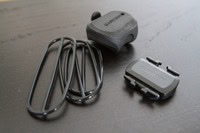 | Garmin Cadence-Only ANT+ Sensor (magnet-less) $39 | Amazon |
 | Garmin Speed & Cadence ANT+ Sensor bundle (magnet-less) $69 | Amazon |
 | Garmin Speed-Only ANT+ Sensor (magnet-less) $39 | Amazon |
Wrap-Up:
I’m not seeing any major issues yet with the sensors, either indoors or outdoors. Though, I’ll dive into more detailed testing and comparisons as part of my Edge 1000 review and see if something sneaks up – especially around edge cases (high/low cadence, rougher sections of road, etc…). This mostly serves as as stop-gap to stem the flow of questions.
Would I recommend you buy the new sensors? Well, that depends a little bit on whether you have sensors today. My feeling is that if you already have perfectly functional ANT+ speed and/or cadence sensors today and they work just fine with your bike setup – then I’d probably hold off. Why’s that?
Well, companies like Wahoo and others have clearly stated they plan to deliver dual ANT+ & Bluetooth Smart sensors by the end of the year. In fact, in checking with them yesterday, Wahoo will be shipping an updated version of their Wahoo RPM magnet-less sensor in just four weeks (same $49 price), which will be dual ANT+/Bluetooth Smart, and also include a new shoe clip (so you can easily wear it at the gym on spin or exercise bikes, etc….). And they’ve got a firmware update in the works to get higher accuracy while worn on the shoe (for both current and future RPM models).
This new RPM will do the exact same thing as Garmin’s cadence sensor – except it’ll broadcast on two frequencies instead of one. They shipped out a version of the new unit yesterday to me, so I’ll be able to start testing it side by side with the Garmin pods over the next few weeks.
Now, to Garmin’s credit here their cadence pod mounting system is far better than Wahoo’s current pod design, as far as portability goes. And I did confirm that Wahoo’s current pod mounting system will be retained for at least the June version.
While we’re at it, Wahoo does still have plans for an updated Blue SC Speed/Cadence combo sensor later in the year (dual-ANT+/BLE), and are determining whether there will be enough demand for a speed-only model as well. Lastly, I don’t expect Wahoo to be the only game in town come the fall with products typically introduced at Eurobike and Interbike.
So to that end, while I like Garmin’s new sensors and wouldn’t have any immediate issues with recommending them, what I’ll be doing is getting one of each of the Garmin units purely for test purposes – but I won’t update all my bikes to the new sensors. I prefer instead the ability to easily get access to both protocols – though, that may be because I’m often testing devices from both camps. So look at your situation and figure out whether having dual matters to you or not. If not, you can save a bit of cash ($10), and if so, just wait a few weeks to see how things play out.
Found this post useful? Support the site!
I’ve partnered with the retailers below. Any shopping you do through these links help support the website. Thanks!Garmin Cadence Sensor V2 – Competitive Cyclist
Garmin Speed Sensor V2 – Competitive Cyclist
For European/Australian/New Zealand readers, you can also pickup the unit via Wiggle at the links below, which helps support the site too!
Garmin Cadence Sensor (EU/UK/AU/NZ – Wiggle)
Garmin Speed Sensor (EU/UK/AU/NZ – Wiggle)
Garmin Cadence/Speed Sensor Bundle (EU/UK/AU/NZ – Wiggle)
Additionally, you can also use Amazon to purchase the units or other accessories (though, no discount). Or, anything else you pick up on Amazon helps support the site as well (socks, laundry detergent, cowbells). If you’re outside the US, I’ve got links to all of the major individual country Amazon stores on the sidebar towards the top.
Thanks for reading! And as always, feel free to post comments or questions in the comments section below, I’ll be happy to try and answer them as quickly as possible.





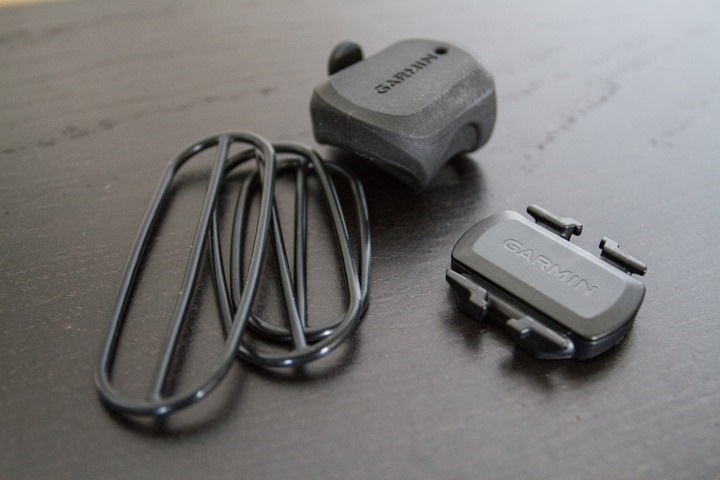
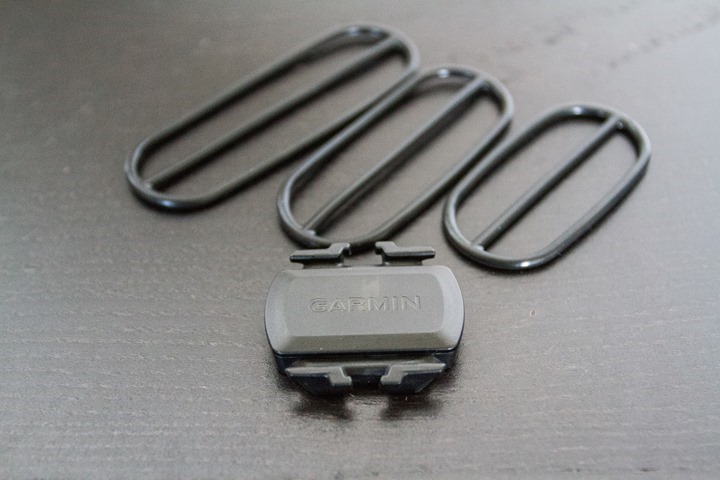
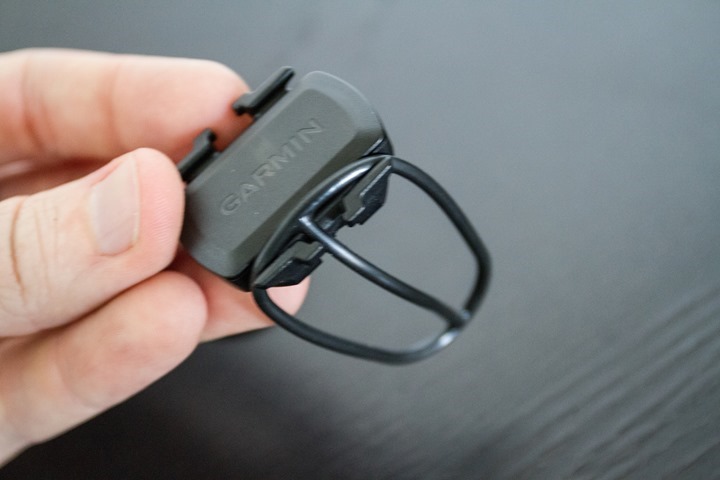
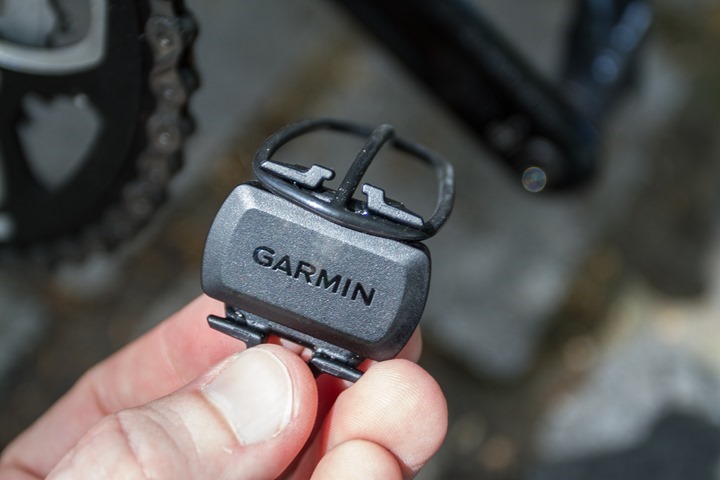
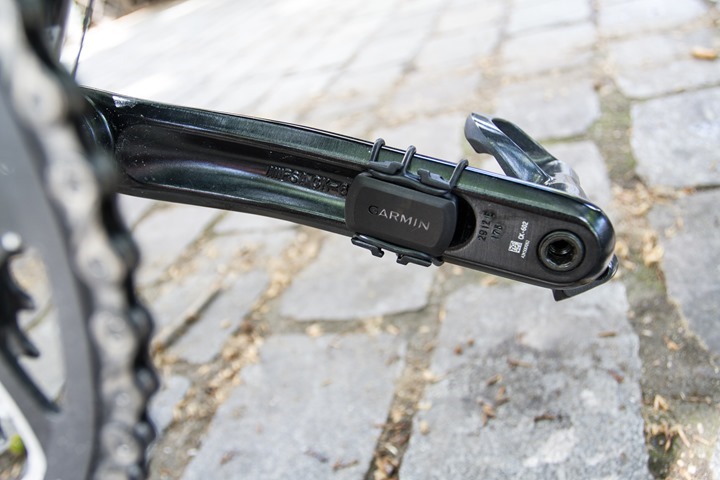
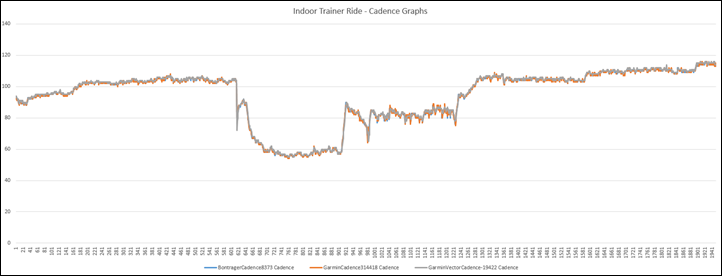
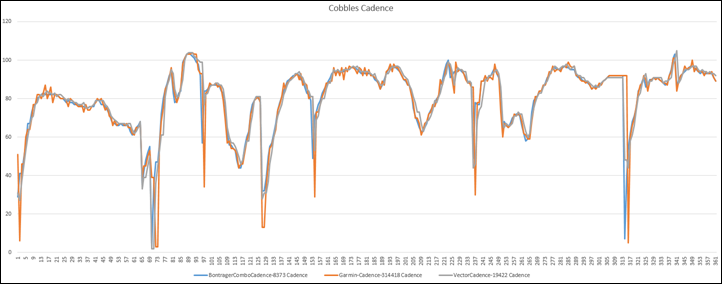
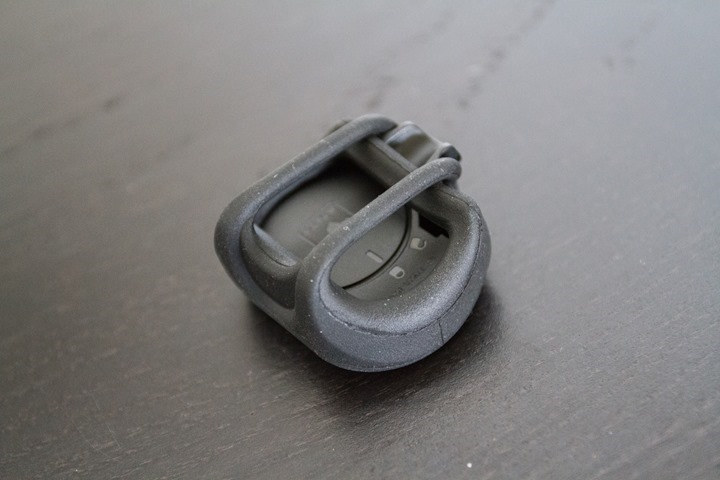
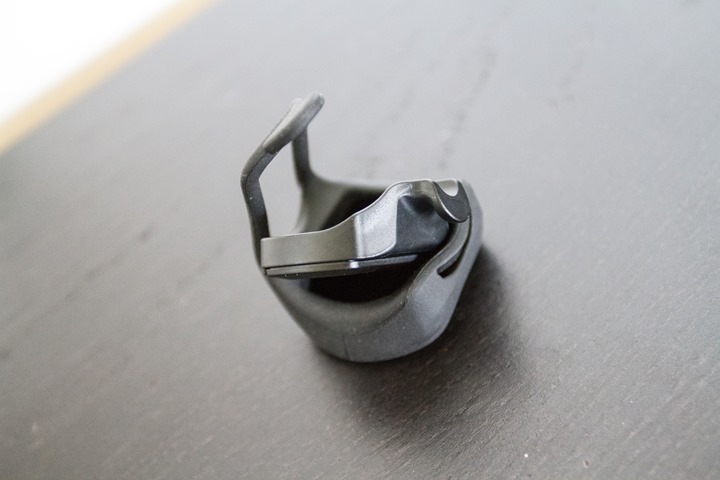
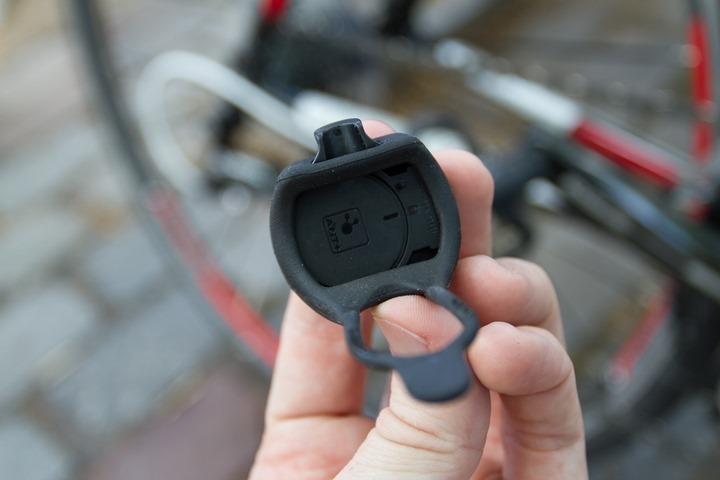
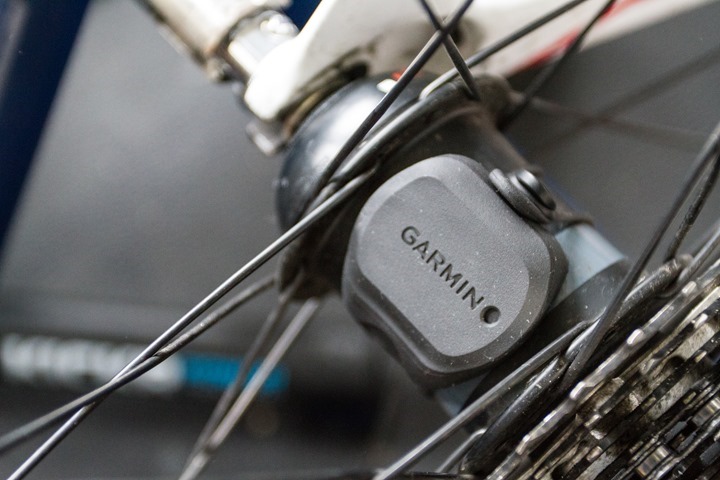
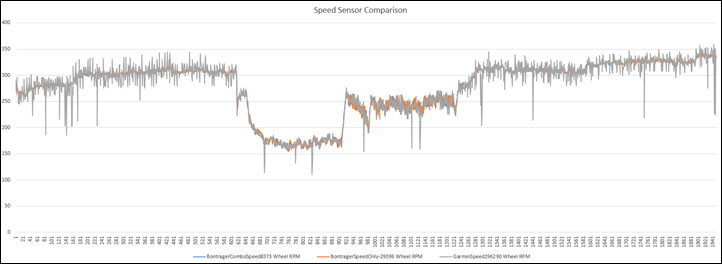
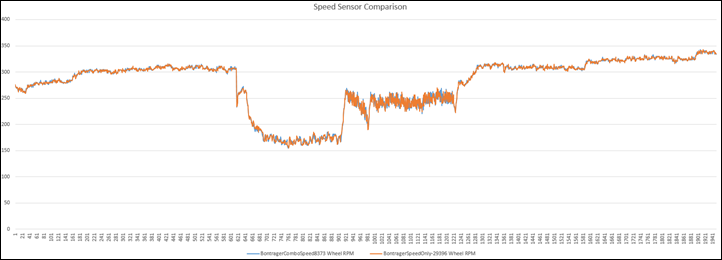
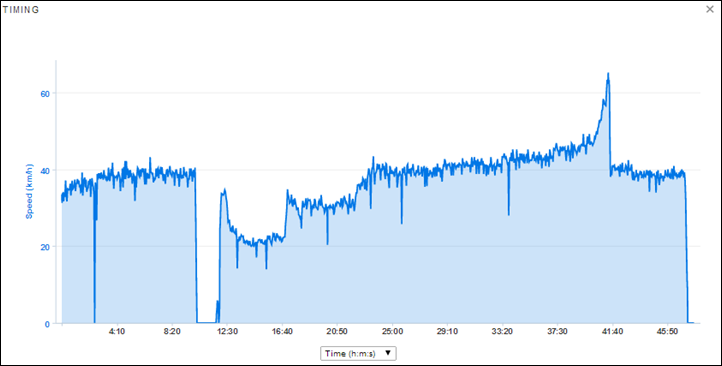
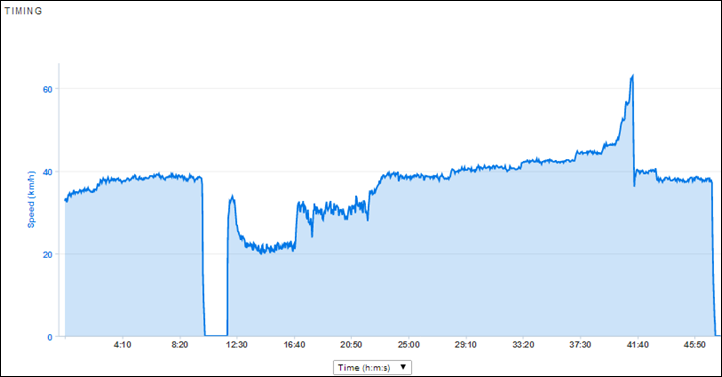
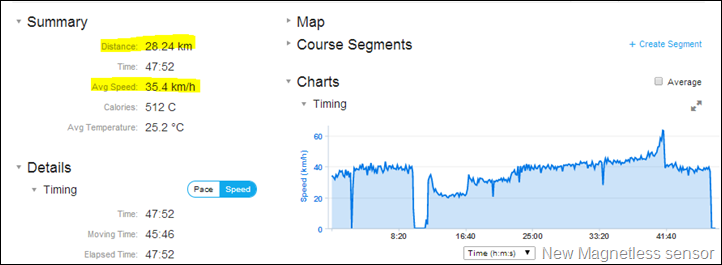


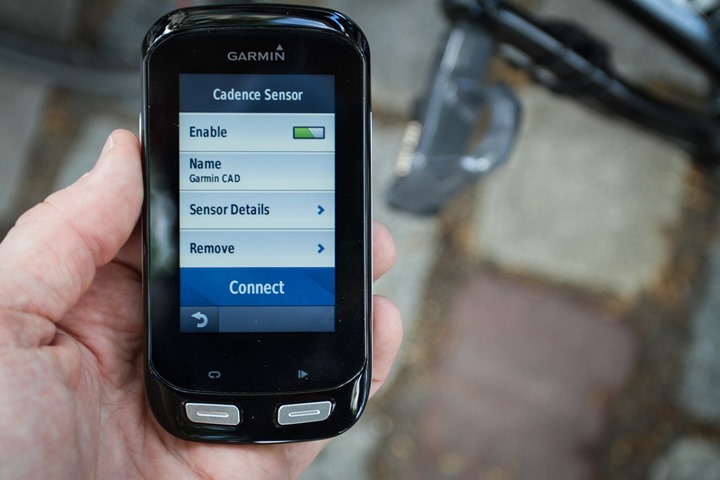
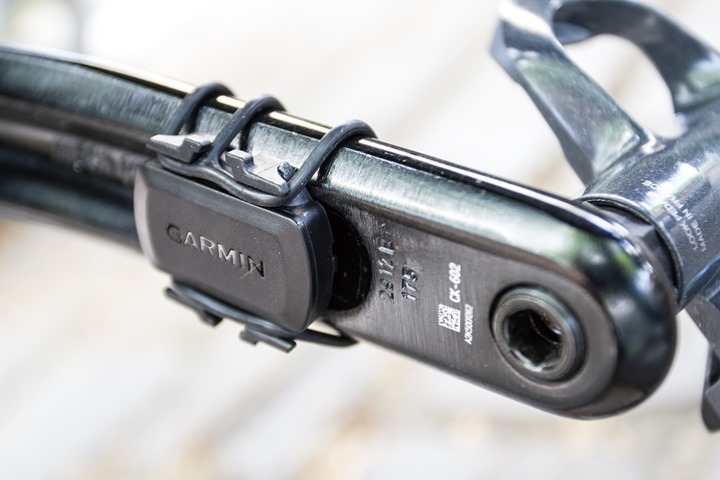




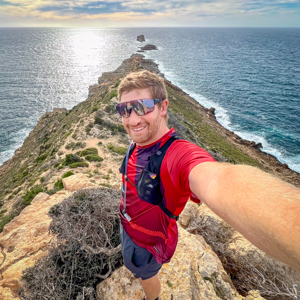




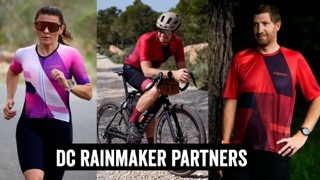
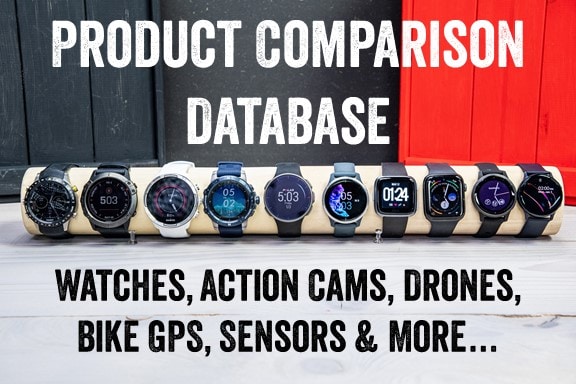
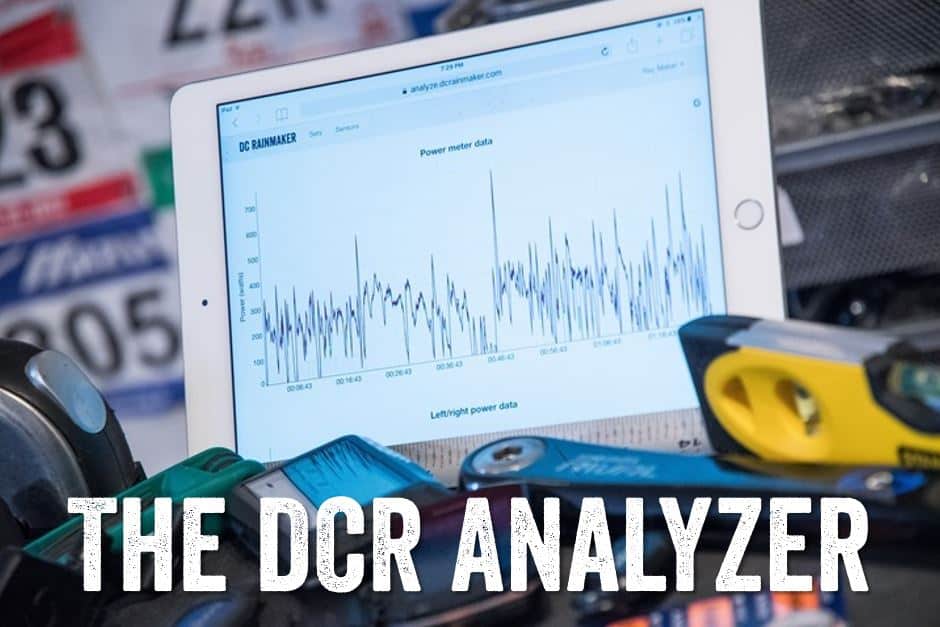

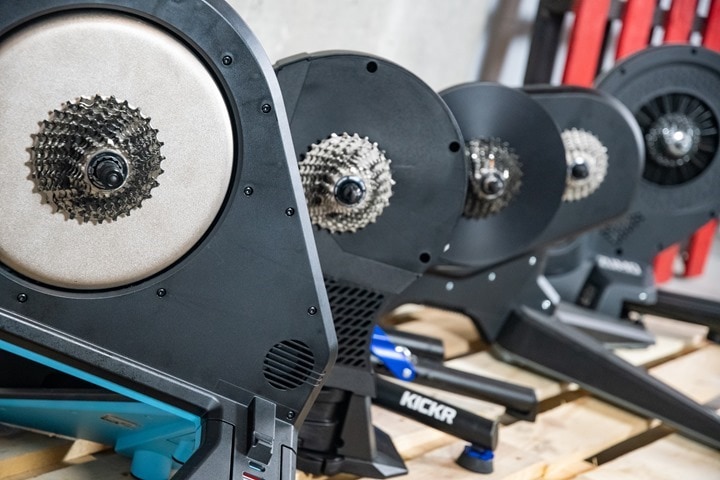
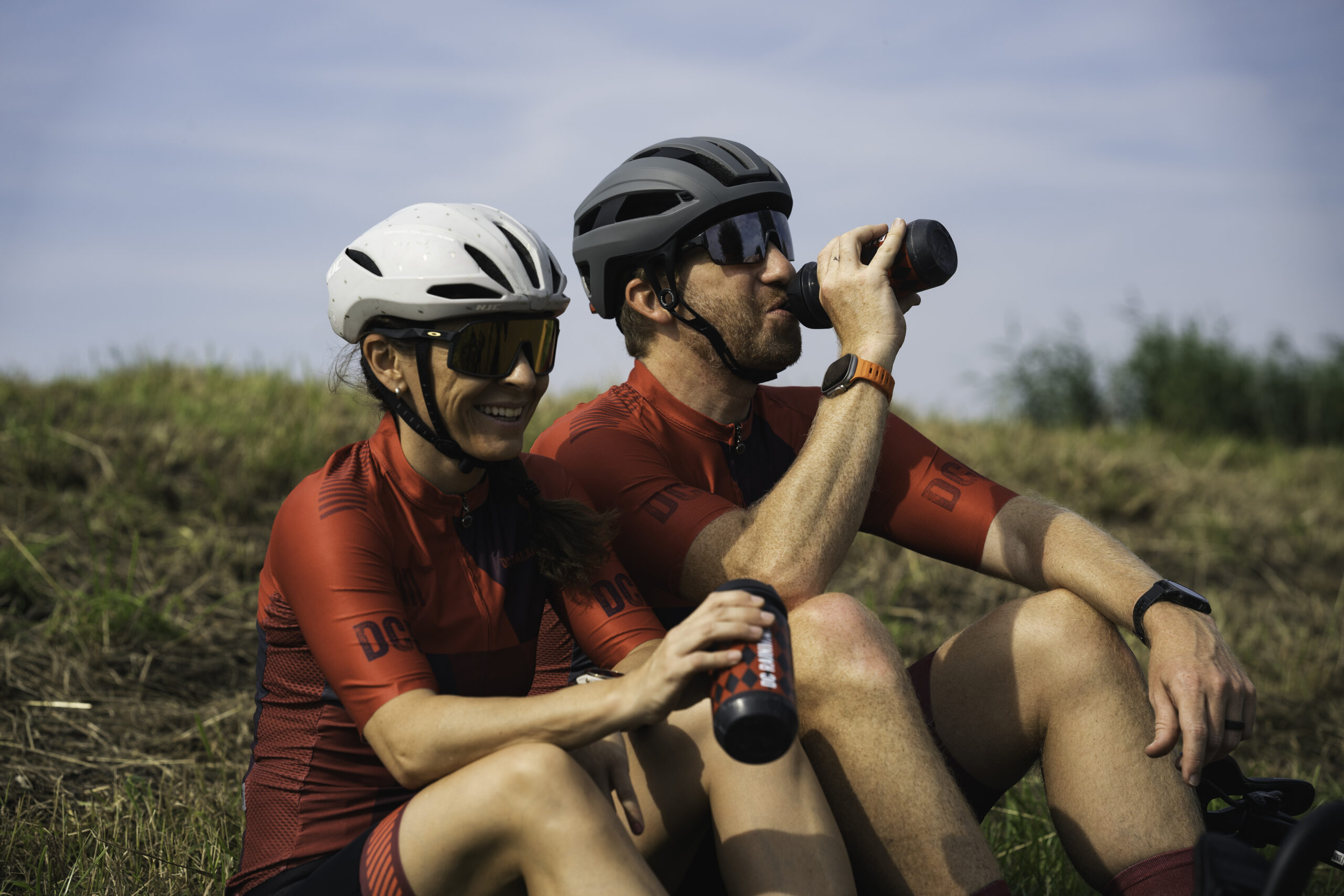
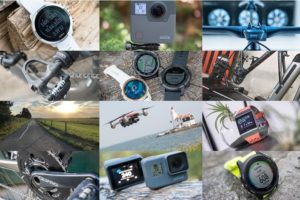
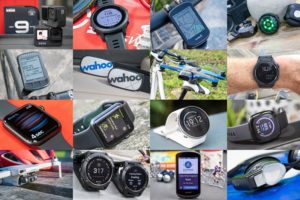

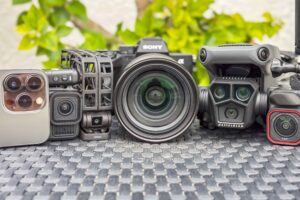

Would love to know how you got the cadence sensor to work. Mine will not turn on or blink after its turned on the crankset. Nothing happens at all, I have taken the battery out more times then I can count and nothing. I am using the Timex cycle trainer 2.0
Have you tried changing the battery? Just sounds like a dead battery.
I have, when it turns on it blinks green then red then green but after that it doesnt turn green after 2 turns of the crankarm like it says it should. Nothing gets transmitted to my GPS but the speed sensor that comes with it works as it should. I have tried everything and even sent it back and got a replacement this one does the same thing.
hi Ian, I had this, when you install the battery the sensors are on, so they don’t blink when you do the two revolutions, if you leave it for an hour or so it turns off then if you rotated them they will blink green. if you are using a Garmin GPS , you need to make sure that the sensor type is changed on the unit to the correct type, separate speed and cadence sensors.
Im using a Timex Cycle Trainer 2.0 with the newest firmware but still no go, I keep trying everything the strange part is the speed works no problem and syncs with it no problem the cadence still cant get to sync. I only bought it mainly for Cadence so I think I am SoL. DC did you actually test your Garmin Cadence sensor with your 2.0 trainer?
So in doing some research, it appears the challenge is that the TCT2 can’t handle the longer ANT+ ID strings that some of the newer speed/cadence are using. These strings aren’t globally unique – some some units have low-acceptable numbers (i.e. sub 100,000), but others have high non-acceptable numbers (100,000-999,999). I suspect this will be an issue with with other ANT+ devices as well, so many companies have now moved to 6 digit ANT+ ID’s. :-/
I’ll update to the table to reflex ‘Mixed’ status on that. :(
Thanks DC! Well that stinks, I guess its back to the drawing board. I really liked the easy swapping of the sensor since I have a bunch of road bikes and dont feel like having to fiddle with set ups every time I wanna grab a different bike. Now I gotta find something compatible but I think its safe to say this one is off the list.
I have been trying to find the one you used on your Timex Review but seem to come up empty handed looking for it. Is it still around?
What about the Wahoo RPMv2 with just a few extra rubber/silicon mounts? I swap them quite often around between bikes with extra mounts on them.
Wow I didnt even see that one! But… Can you confirm that it worked on the Timex Cycle Trainer GPS? If so that would be what I need to snag!
So I picked up the Wahoo like you suggested! Best thing ever! Loving it, its really nice with the shoe mount. My Timex picked it up the 2nd I turned on the computer. I took it for a spin with one bike that still had a cadence sensor on it and it was dead on. Wish I knew about this one before I dropped the money on the Garmin. Hopefully I can still return this one as only the speed sensor is useful for me if I wanna ride on the rollers. The Wahoo mount for the crankarm doesnt look that bad but I am going to keep it on my cycling shoe since its an effortless swap to each bike and I can just take it off my shoe when I am MTBing. I honestly think the Wahoo is a better buy since its Bluetooth and ANT.
Hi DC rainmaker,
What does “mixed” status mean? I can’t seem to pair my timex global trainer with the cadence sensor.
Does this mean it’s not compatible?
Is there a better wheel to attach the speed sensor to? Front wheel or back?
Thanks
Can I use it on spinning bike?
Wahoo RPM & the Garmin cadence – yes. But not the Garmin speed sensor.
Any reason why pls,could I try to mount it on wheel some how thanks
Virtually all spin bikes have solid wheels, whereby there’s no ‘hub’ to mount it on.
If the sensor is stuck on and comes loose when at full speed it will probably shoot the cat!
Just curious, but has anyone tried the cadence sensor mounted to a shoe rather than the crankarm?In trying to be as minimal as possible, I had hoped there would be a way to use a foot pod to monitor cadence, as opposed to attaching anything to the cranks. The footpod does not appear to be compatible with the Edge 500, but I’m wondering if the new cadence sensor could be used/mounted like a foot pod.
You should be able to use the cadence on your shoe if oriented properly. It definitely works for the Wahoo RPM sensor.
Hi Ray, has anyone successfully used the cadence sensor on their shoe?
I just bought a 520 with all the sensors and I do a lot of crosscountry cycling complemented by spinning classes. I would like to take my 520 from the bike into the class without having to pair to anything else or assemble the cadence sensor do the stationary bike every time.
So my ideal set up would be to put the cadence sensor on my shoe and carry the 520 and put it on my stationary bike. I use always the same one so I can put the half-lock pod on it.
ALSO: how can I calibrate the 520 to count the cadence rotations and give me distance?
Keep up the good work.
I have been thinking about installing an ANT+ speed sensor to my treadmill for far greater accuracy than a foot pod can provide, but have always been aware of the problem of fixing a magnet in place. In the past I did experiment with this (with my Ambit 2) and fixed the magnet to the flywheel of the motor pulley. Whilst this did initially work I discovered that at speeds in excess of 6mph, the Ambit could not compute the information (speed rate at which the flywheel was rotaing.) I then fixed the small magnet to the side of the treadmill belt and calibrated it correctly to precisely match that of the treadmill. Obviously, this did not last long as the magnet would eventually work loose from rotating around the rollers.
Ok, so now I`m wondering if this magnet-less speed sensor will work in this scenario if I can find a way of fixing it to the motor pulley? Obviously avoiding drive belts and running belts.
Has anyone had any previous experience with this?
Whilst I agree the footpod does provide some degree of accuracy, for me it always seems to vary over incline, pace, treadmill and running shoes. This could be just what I`ve been waiting for!
Thanks.
Interesting. Haven’t heard of anyone doing this, but would definitely be interested in hearing a solution if you work one out!
The thing I would worry about is finding limitations due to the fact that the sensor was designed for cycling, as it seems you did with the Ambit. For example, a bicycle will at most go 100 kph (27 m / s) normally (and this is a nice round number which is about twice the maximum speed I usually attain during the year), so the sensor may not be designed to work above 15 revolutions per second. Your drive pulley may be going faster than that. The sensor may be designed to count revolutions around its long axis, limiting the ways you can mount it. You’ll also need to hope that the head unit you’re using to record will allow arbitrarily sized wheel sizes to compute speed/distance.
The way that would simply work is to find an old bicycle wheel and rig it to rest on your treadmill belt and freely rotate. Then just attach the sensor to the wheel.
But for $40, it may be worth just experimenting and see what you can do. You can always give/sell the sensor to a cyclist if you have no need for it.
Hi, and thank you for your comments, very much appreciated.
Firstly, the treadmill has 2 to 3 inch diameter rollers and I`m hoping there is enough free space to the side of the front roller to fix this in place as would be the case if it were fixed to a wheel hub that would have a smaller diameter, so in theory, (if I`m correct in my thinking) the bigger diameter the more chance this has of working because that would mean it would not be rotating as fast as a 1 and half inch diameter wheel hub, for example – for the Suunto Ambit2 to have to deal with.
Secondly, I will also lose my cadence reading that the foot pod would give me but this is not an issue for me.
And also, I use Outside Interactive software (Windows based) and I know for a fact that I have never ben able to get this to work with magnetic based ANT+ sensors, it was only ever designed to work with the internal accelerometer type that a foot pod uses – so again, I will experiment with this type to see if it works, but not getting my hopes up with that.
I just have placed an order for one of these with Amazon (UK) and will update you toward the middle of next week after the Easter holidays as to whether the Ambit can react fast enough beyond speeds of 6mph to make sense of it. Logically, I`m thinking if it can work on a wheel hub then it should work on a 2 to 3 inch belt roller.
We shall see….. thanks again.
No, that’s just backwards. At 3 inches, your roller “covers” roughly a quarter of a meter per revolution. A bicycle wheel covers roughly 2 meters per revolution, so your rollers will be rolling 8 times faster than a bicycle wheel at the same “speed”. Of course, running speeds are lower than cycling speeds, so it may still work. 10 mph on a bicycle is around 2 revolutions per second of a bicycle wheel, or 16 of your cylinder, so the sensor might still be able to count that fast. (Remember, the sensor is misnamed. It does not measure speed but wheel revolutions.)
Ok, very impressive thinking Paul! That would explain why it worked previously albeit in a very crude way by super gluing a small magnet to the edge of the running belt and calibrating the watch to the length of the running belt which if I remember roughly was around 2.2 metres. I read somewhere that these new sensors are self calibrating so not sure how the Ambit would fair in terms of overriding any differences there.
I shall feed back mid to end of next week. Carpe diem!
It won’t self calibrate indoors. Remember, all the sensor sends is either “I’ve done this many revolutions since we started” or “I’m doing this many revolutions per second”; I’m not sure which. It knows nothing about speed/distance. The head unit is the thing that converts the number/rate of revolutions into speed/distance, and to do that, it needs to know how much distance each revolution corresponds to. Outdoors most head units will self calibrate using GPS. Indoors that’s impossible. You’re going to have to tell it how much distance corresponds to each turn of the drum, and the easiest way to find that out is simply to measure how far the belt has moved after one rotation. But then you have to worry that the head unit won’t accept a number that small (since on a real bicycle wheel it’s typically almost 10 times bigger).
For example: The Suunto Ambit2 watch which I use to record all my exercise data is able to accept a minimum value (wheel circumference) of 205mm and a maximum of 4100mm. The smaller diameter is great when attached to a spinning style exercise bike, and previously I thought it would be ideal for the treadmill pulley wheel attachment when I measured it – but as you correctly state (and as I found out in the past) – the head unit, in my case my Ambit2 couldn`t cope with the high speed revolutions at that low a diameter. Simply too much input for the watch to handle above 6mph. It will be interesting to learn if this new method stands up to the test next week.
Well I don`t know what`s going on with this new type of sensor. I have easily attached it to the front roller of the treadmill by the side of the belt – it rotates freely with no hindrance from anything. The sensor lights up green initially when spinning but it won`t share any data with the Suunto Ambit2. It pairs with it no problem. I have tried playing around with various measurements/speeds in order to get something from it but nothing at all. I have even tried changing the direction it was facing in case this mattered as the rollers on a treadmill rotate in a different direction to a bile wheel.
Is this new type of sensor only compatible with certain Garmin devices similar to what a Garmin ANT+ temperature sensor is? I have no idea why I can`t even register a couple of mph/distance from it after changing and experimenting with so many different values.
I will need to try this out on a bike before giving up with it.
Hi DC,
I came across your site whilst trying to figure out if the Garmin speed sensor will work with an SRM PowerControl 7. My existing ANT+ speed sensor (the one that came with the SRM) just died, and I like the design and ability of place the Garmin sensor on the hub. It’s very clean looking.
Would you know if SRM will pick up the speed signals? Thanks, Darren
Seems like Garmin never got around to released a magnet-less version of the speed+cadence sensor with BlueTooth?
Is there any news on that? I love the cleaner look you can get with this over the equivalent Wahoo sensors.
Garmin has never had plans to release a Bluetooth variant (they own ANT+, a competitor to Bluetooth).
If looking for a dual sensor, the BlueSCv2 is the way to go (it’s what I largely use now).
Ahh, re-reading the article now, I realise I’d misread. I have the Wahoo bluetooth and ANT+ cadence sensor on one bike which works a treat, the BlueSCv2 looks (comparitive to this Garmin and the Wahoo magnetless cadence sensor) pretty ugly on the bike…
Would be cool if Wahoo brought out a magnetless speed sensor that mounts on the hub like this Garmin, looks so much cleaner!
I always want things before the market deliver them, sheesh :)
Hi,
So I’ve got this installed and the cadence sensor read immediately after pairing, but I’ve not been able to get speed while indoors on a trainer. I have it paired with the 920xt and set that to the indoor bike when inside.
When I did the sensor detection it didn’t show one for speed only cadence. Is that just a bad sensor for speed?
Thanks
Do you have a wheel size set? You’ll need to validate that.
I set up the cadence sensor with my 310xt yesterday (which is working) but now my HR monitor is not working on either the bike or run. I have tried to repair the HR monitor. Any other suggestions?
Did you try changing the battery in the HR monitor?
Hi Ray,
I have a Powertap G3, just got a new bike, and trying to decide what cadence sensor to go with. Sometimes I like to spin a really high cadence for a minute or two (180 rpm or even topping 200 for a handful of seconds.) I’ve experienced the Powertap G3 failing to measure this. So I don’t need speed, but I’m not sure if the newer non-magnet cadence sensors are as accurate as the GSC10 speed/cadence sensor for RPMs. Any thoughts on which gadget to buy?
You’ll definitely want a magnet based one then. I’d go with the Wahoo BlueSCv2, which is dual ANT+/BLE. It’s what I’m using on the bikes I’m doing testing with (i.e. power meter testing).
Thanks!!
I am new to this type of technology so forgive me if my question is not a good one. I have the Garmin vivoactive watch. Do I need a cadence AND speed sensor for my bicycle since my watch already tells me speed VIA GPS? Are the ANT+ speed sensors more accurate than GPS for speed? I was thinking maybe I only need ANT+ cadence SENSOR so that I can monitor that but wanted to make sure…
The sensors are more accurate once the wheel size is calibrated, primarily because the error in consumer GPS is about 3 meters at best, while a typical wheel circumference is about 2 meters. As a practical matter, unless you’re riding mountain bikes in dense forests on twisty trails or road bikes in cities, where GPS error can get much worse because of sky blockage/reflections, you’re not likely to notice the difference.
Hi Ray and All,
Ive just ordered a combo speed/cadence sensor for my 920XT,and the shop phoned me that soon (after a SW update) the GSC10 and other (like Bontrager’s combo sensor) will be incompatible with the 920XT. Garmin told to the shop when they asked back (“But it is compatible now,right?”) that they will arrange it to don’t be compatible. So as far as things concerned in Hungary, it looks like Garmin FR 920XT soon will only be compatible with the new kind of speed sensor and cadence sensor in your review. No mor GSC10 love from garmin :(
Regards,
Andras
Just wondering if this new censor will work on the old 705 model?
As the compatibility table in this article above says, no, it won’t.
Just wondering does the new cadence censor work with with the garmin 705? ?
No, the new cadence sensor won’t work with the 705. The 705 requires a combo cadence/speed sensor.
Hi Ray,
I was wondering if I can use the Cadence and the Combo Sensor on a bike.
Speed coming from the Combo.
I have an Edge 810.
Hi,
This might be a dumb question but using the new speed sensor on the hub do I have to tell my 810 the wheel size in order for it to computer the speed correctly?
Thanks
For best results, yes. The 810 will auto calibrate using GPS if you want, though. The itself sensor is misnamed. It measures wheel rotations, not speed.
“itself sensor” = sensor itself. (I don’t know what happened.)
Paul,
Thanks for the reply and don’t worry about the typo my text is littered with them. Get to use to having auto correction switched on :)
Hi DCRainmaker,
I have started using Garmin Vivoactive with HRM and it is calculating my speed pretty accurately.
I would like to measure my cadence and probably will use vivoactive with my trainer as well. Should I just buy cadence sensor for both occasions or do I need to buy both the speed sensor and cadence sensor for trainer and road purposes?
Thanks
If you want speed indoors, then you’ll probably want to either get the bundle (speed sensor + cadence sensor), or the combo (speed/cadence). You won’t need to remove the speed sensor from the bike when outdoors. Most folks just leave it on all the time.
Ray,
Would the speed sensor work if mounted on the indoor spin bike and is there a way to configure it so speed sensor returns accurate distance & speed data.
Or does the speed sensor must be self calibrated first by hooking with garmin edge/watch.
Thanks
AJ
Well, yeah, easy. Just set the wheel size to zero, since speed and distance are both zero on a trainer. Or leave the sensor off which will amount to the same thing.
If you want it to lie to you, then you have to put the sensor on the hub of the wheel somehow, and then you set the wheel circumference to whatever gives you acceptable numbers. Since I ride rollers indoors, I simply use the same number that I use outdoors, but I don’t take the speed or distance seriously, what with the lack of wind or climbs.
Thanks Paul. That’s great to know. Yes, I am looking for a hypothetical measurements but think that, should the resistance stay the same speed, distance and cadence information would be pretty helpful to measure progress.
Thanks again!
Hi Ray,
i have both magnetless sensors and i’m very happy with them.
Now i would like to buy sensors that are bluetooth smart compatible and only found a magnetless cadence sensor (Wahoo RPM) but not a magnetless speed sensor.
Is there really no magnetless speed sensor available that is bluetooth smart compatible?
Thank you in advance
Markus
Correct, I’m not aware of any dual ones.
ty!
Hi Ray,
Here is a no magnet-less speed and cadence sensor, compatible with ANT+ and BLE devices, have you ever try this one?
link to amazon.com
Yup, I’ve had a test version for a long while, but it was kinda flakey (due to being beta).
However, I just bought the production one last week, and literally just took it out of the box a few minutes ago.
Hi,
I am new to cycling, so please forgive if the question is not right. I bought the garmin heart rate plus cadence and speed sensor. I downloaded the strava app to my S4.They just cannot pair. If they are supposed to pair, what am I doing wrong?
Thanks for your answer, I am so puzzled. …
Hi
I just bought speed and cadence sensor, both separately
I have Fenix, very first model
In each box the only fenix compatible is Fenix2
Is there any trick to pair this devices with my Fenix?
I really appreciate your answer
By the way congratulations your post are really helpful
Can’t be done. The sensors can’t be paired with a Fenix 1.
I can’t get my Edge 500 to detect the sensors no matter what I do. I set the setting to ant+ speed and cadance, replaced the battery on both.
Are they already mounted to the bike? And did you spin the wheel/crank before searching?
Ok, so I had to update the firmware on my edge 500, and it detects the sensors now. Not sure what firmware my edge 500 was running, but I have not updated it in the last 3 years or so.
Ok so I finally got it out for a ride. One problem i notice is the Edge 500 would auto pause the log, then start again seconds later, even though I was moving at over 30km/h
I think this question is more head unit related, but I’ll ask here because it would centralize my question to the speed sensor.
If I have the head unit configured for “auto”, does it constantly recalibrate? Calibrate once per ride? Only calibrate once? (After my first ride, I thought I had checked the calibration value and found it 2070. But I just checked again and now it is 2047. I doubt that my tire has worn that much.)
Specifically I have a Edge 500, and a 920XT.
Hello,
Are you able to get a power rating or watts from the Garmin cadence sensor?
Thanks,
Perry
No, just cadence.
There are some 3rd party apps (like TrainerRoad) that will give you virtual power on a trainer, using that data.
Thanks for your reply.
I plan to use a trainer this winter so both products should come in handy.
Perry
Hi,
I have the old speed and cadence sensor. I use a Garmin Forerunner 920XT. I am thinking about get a new bike and want to replace the old setup.
Is their any point buying the speed sensor. Can’t the Garmin Forerunner 920XT work that out via GPS? Don’t I just need the cadence sensor?
Best wishes
Michael
The speed sensor is more accurate and helpful in places where GPS doesn’t work well, like in cities with tall buildings or canyons or under heavy foliage. Usually, when GPS is working well and the wheel size is calibrated correctly, you won’t see any difference with or without the sensor. The one drawback of a sensor is if the sensor fails for some reason the head units don’t switch back to GPS immediately, so you’ll lose some distance.
It’s Sunday, so Garmin Support isn’t in, and this has been driving me nuts since I installed my new bike speed and cadence sensors on my bike. I turn the back wheel two times and I get the green flashing light that all is okay. I rotate the crank a couple of times to make sure nothing gets clobbered by the cadence sensor.
Q1: I’ve read in multiple places that there is supposed to be a green flashing light on the cadence sensor. I can’t find anything on that sensor that remotely looks like it would emit light. If there is a light on this sensor (like the very obvious depression in the bike speed sensor), could you please tell me where the heck it’s located? I have not found anywhere that would come close to being a light on the cadence sensor, and I’d like to know if my sensor is functional (green light blinks), if my sensor simply has no light (no green light), or if the unit is non functional (no light, no clue).
Q2. I’ve tried pairing with my Forerunner 910XT and have failed miserably. Under Bike Settings, I’ve selected the bike on my trainer, selected ANT + SPD/CAD, and selected YES about the sensors being present, all while riding the bike to get the sensors moving. Does the 910XT just automatically pair up with the sensors, or am I supposed to be getting an alert that says “SPD/CAD SENSOR DETECTED” like I get for my heart rate monitor or my footpod?
Thank you in advance for clarifying this!
1. It’s on the side. It took me a long time to find it myself. The easiest way to find it is to spin your cranks in the dark after it’s been stationary long enough to turn off. If you don’t see a light then, something is wrong. First thing to try would be a new battery.
2. You don’t tell it to look for a SPD/CAD sensor, because that’s not what you’re trying to pair. You tell it to pair with individual SPD and CAD sensors. It’s possible that the 910XT is like the Edge 800 in that those choices don’t show up immediately but only after you’ve tried and failed (Garmin UI can be weird).
Hmph. Roll-out test on unweighed bike yields 2140 as the setting. That seems weird. I really don’t care as long as its close, but where most manuals calculate my 700x25c road tires at 2110, 2140 seems like a significant difference.
hi im having the similar issue.Were you able to find a solution?Thanks.
Hey, I was wondering if the cadence sensor could be strapped to your ankle and also be used to do cadence sensing for running? I know the wahoo can. Thanks.
So I have two speed sensors. One on my mountain bike and one on my ‘cross bike. My ‘cross bike has two wheel sets and several sets of tires. I run from x28c to x40c tires and wondered if I need to do anything to re-calibrate or tell the speed sensor when I have changed effective wheel size.
It was calibrated on a set of x33c tires.
Yes if you expect it to give you accurate speed and distance. There’s no magic; the head unit determines speed and distance from the number of rotations and the wheel circumference. The sensor itself only counts rotations, and knows nothing about the wheel size. The head units I’ve used (Edge 705, 800, Fenix, Epix) all can self calibrate from GPS data, but I don’t know how you force that to occur with any of them. If I were in your situation I’d calibrate all of the various combinations ahead of time and then input the proper number manually before using the specific wheel/tire combination.
Thanks Paul,
I figured out the Garmin 1000 auto-recalibrates. I rode 35 miles on x40c tires that I think measure a little less than that and just checked my settings (now that I found them) and it was now at 2144. I am pretty sure it did not start with that. In any case it still reports overall distance and time accurately with GPS/GLONASS running.
I decided to just use the ERTO conversion site provided above (by you I think) and manually set it for today.
I appreciate the feedback
Thanks for all of your work investigating and reviewing these products.
I have a Garmin 500 and the GSC10 setup on a road bike. If I buy the new Garmin sensors for my Mountain Bike, can the Garmin understand two different sets of sensors or am I doing a reset every time I go for a ride? Or should I buy the Bluetooth setup and just run MTB rides off of my iPhone? I would prefer to use the Garmin 500 for both if that would work and it wouldn’t take time before each ride. Thanks
If the 500 works like the 800, all you need to do is set up separate bike profiles for each bike. After it’s set up, the 500 should only pair with the sensors that are on that particular bike, so all you have to remember to do is choose the correct profile.
Yup, that’s correct on the Edge 500.
So I just bought these new garmin speed and Cadence sensors. I cant seem to get them to pair with cyclemeter app as I thought they would as they are ant +. I have both an iPhone 5 and 6. Am I missing something. Shouldn’t they pair with the app? Please help if you know.
Hi Ray,
Thanks for all the hard work you do on the reviews. My question is, how waterproof is the speed sensor? My GSC10 (2 yrs old) just died after a light washing. Would I need to remove the sensor each time I clean the bike?
Thanks!
Dave
It’s IPX7, which is the same as your GSC-10 (so complete immersion for 30 minutes at 1-meter deep). I’ve seen some pretty crazy stuff with GSC-10’s surviving, so my guess is that somehow the unit got a crack in it and then water got in somehow.
No need to remove the sensor for washing.
Very strange,
I’ve got myself this new combo on my brothers bike and my own bike and they work perfectly together with the 800 and 1000.
I bought another set for my son’s 24″ Scott RC jr and the cadans worked for 1 ride.
After this it stopped and I can’t seem to get it back online.
Not with the Garmin 1000 nor with my 800 or my son’s 800.
Any idea’s???
Or is this a case of warranty. :(
You’ve tried a new battery?
Nopez, didn’t even think about that since it’s brand new.
Going to try that first thing in the morning.
My speed sensor cut out one time after a light washing. I dried it off, opened the back and simply took out the battery and put it back in and it worked fine. Not sure what caused it.
I’d like to comment regarding the ‘one size fits all’ principle of the speed sensor. There is no way that it will fit arround a Rohloff speedhub.
HI
I have a Garmin 800.
Can I have a mixture of the “new” speed sensor with the “old” cadence sensor magnet?
Thanks
Firstly thank you for this site its very helpful. I have a S4 with ant+ built in. I was planning on downloading the ipbike app. Do you know if the IPBike app or any app for android phones has separate ant+ sensor profiles that will work with these new cadence and speed sensors. I’d rather buy these than the older Garmin GSC 10 which has the combined ant+ Sensor/Cadence.
Basically I asking does anyone know if any Android App have 4 ant profiles:
ANT+ Speed-only: The new magnet-less speed sensor
ANT+ Cadence-only: The new magnet-less cadence sensor
ANT+ Speed/Cadence Combo: The older GSC-10 combo sensor
ANT+ Speed and Cadence – for connecting both new cadance and speed sensors – what I need
Got all the Garmin devices I’ve order. My setup is the following if anyone is looking for something similar. I have a Samsung Galaxy S4 running Android Lollipop 5.0.1. I am using the Wahoo fitness app and everything has paired up.
I have the following paired
Garmin HRM soft strap
Garmin Cadence sensor
Garmin Speed sensor
Garmin Foot Pod
What I really like about the Wahoo app is I can calibrate the foot pod (can’t do that in many apps) . When I choose “Running” as my activity I have the choice of letting GPS determine speed and distance or the foot pod. Most apps automatically choose GPS. Also when I choose “Cycling” as my activity I can choose to use the speed sensor to determine speed and distance over GPS.
I have Garmin’s ANT+ Speed & Cadence magnet-less sensors plus Edge 500. How to get rpm data displayed on a graph has got me buffaloed. Garmin Express doesn’t seem to support rpm’s.
Hi, thanks for the great article. I have the new combo on my bike and connected to my fenix2 however I’m only getting the cadence reading on the watch..no speed..changed battery,,flashing green,,still not working..what do you think could be the issue? Thanks
why would I use the speed sensor with my edge 1000 and not just rely on the units gps or recording speed.
does it improve the accuracy ?
Yes. Also, if you go somewhere where GPS reception is iffy (dense forest, canyons, large city) you won’t be affected.
Hello,
Sorry if I have missed it, but what’s the added value of the speed sensor when cycling outdoor (when having a Fenix 3 for example) ?
Thanks
A little more accuracy, and it won’t go nuts if GPS reception is poor.
Ray – I see this is on your stuff I use list for 2015 (for road bike at least), I’m wondering if you still see speed issues mentioned in the review?
(Also, you can put this on the front wheel right?)
Thanks for the responses, makes sense
Thanks for your answer !
Hi, I’ve just bought a Minoura B60-R turbo trainer and would like to use it with Zwift. Would buying these sensors allow me to do that and what (if any) other equipment would I need in order to get them to ‘talk’ to my laptop?
Do you know which iPad apps these sensors are compatible with for indoor training?
None unfortunately. As on an iPad it doesn’t support ANT+, and these sensors don’t communicate over Bluetooth Smart (supported on the iPad).
Thanks for the quick response…do iPhones support ant+?
No, unfortunately no iOS devices do natively.
You can get an adapter, but they are for the older connectors (30-pin), versus the new Lightning ones, so it’s a bit messier (since you have to get another adapter).
Thanks
Ray, you thought there would be more sensors coming out after this May 2014 article.
Did that happen et où puis je trouver le resumé? :-)
(am about to add a 3rd cadence)
Wahoo had planned to also do a speed-only sensor as well, but never happened.
Personally, I’d go with the Wahoo BlueSCv2 (combo), or the Wahoo RPM (cadence-only).
Tks Ray!
RPM is 30% more expensive than Garmin for which you get BT. (my phone has ANT)
SC is the previous generation I think, with magnets. (I have a couple of GSC-10’s that came off bikes)
No other brands at all? Strange……..
Why don’t you try VeloComputer Smart sensor, they provide the magnet less speed and cadence sensor (ANT+ & BT)?
There’s been a few others from lesser known brands, but none have really had any specific reason why you’d want to go with that versus a trusted brand (and they were rarely any cheaper).
One thing to keep in mind is that for the most part all sensors are made by a single OEM in Asia, and then just rebranded. That’s why, for example, all ANT+ footpods are the same. Or why Wahoo’s BlueSC looks identical to Bontrager’s.
Individual companies can add their own software – such as with Wahoo and the odometer. But most just take it for stock.
Finally, one last thing to keep in mind is that not all Android apps support ANT+ (even if the hardware can), so it’s why I really like the dual-capable sensors, so it ensures you’ve got compatibility with everything.
The Wahoo speed-only sensor seems to be available now.
link to eu.wahoofitness.com
A review would be appreciated.
Hi Rey.
First of all I would like to thank you for your excellent work, blogs, comments …
Based on your recommendations I have bought Tacx Vortex Smart with Smart upgrade. I hope it will come no later than tomorrow :-)
My question is:
I plan to buy Garmin Edge 520 for outdoor and some indoor trainning info. I think that Wahoo Blue SC Cadence/Speed sensor is a good choice to complete this device, isn´t it ?!
Could I use it /Wahoo/ also together with Tacx Vortex Smart for cadence info or together with Zwift ? Or is it unnecessary?!
Will my Heart rate sensor Wahoo Tickr X work with both devices ?
Thank you very much for your answer.
Jiri – Czech Republic
Hi!
Thanks for the great review! I recently pursued the forerunner 920xt and would like to pair it with cadence sensor. As I am living really north, I cannot use my bike outside due to the snow. So, I was thinking to train in spinning bikes in my local gym which unfortunately they do not measure cadence. Do you think this sensor can fit in a crank of a spinning bike? How big is the bigger strap that is supplied with the cadence sensor?
I tried it on a bike at the gym to see if it worked. I was able to get it on the crank with the biggest strap. It depends on the spin bike. How close the crank is to the inside of bike. How close the pedal is to the crank, if it will get in the way. The diameter of the crank. However I think you will be good.
Thanks a lot for the response. There is enough space to put it between the crank and the pedal, but I am afraid about the crank being very big. The cranks is approximately 6.5cm height and around 0.5cm width. Do you think it would be still ok? of course, I can check better the next time I will go there, but just to have an indication of how big it is.
I usually keep all my stuff organized in boxes but apparently I misplaced the other rubber straps to the cadence sensor. I’m actually quite pissed at myself. I’m pretty sure I am using the largest one but can’t be positive until I find the others, if I can find them. My crank is 30mm high by 10 mm wide. Thats a circumference of 80mm. Youre saying the gym bike is closer to 130-140. I don’t know if it will be able to go that far. But you could probably buy a bag of multisized rubber bands and rig something up. If it falls off in the gym you won’t lose it like outside. My have a really large hub on my back wheel and had to use a rubber band to expand the side of the rubber strap for the speed sensor. Needed to put it on the back wheel for the trainer. Outdoors I just put it on the skinny front hub.
I find that when I attach the speed sensor to the rear wheel, the ant+ connection seems intermittent. My Edge 500 and now 520 will auto pause, then start, again and again. The speed will also fluctuate greatly, dropping to 10+km/h then back up again, even when I am going constantly above 30km/h.
On the front wheel it does not auto pause, but the speed will still fluctuate, although not by that big a margin. Also the front hub diameter is much smaller, so the sensor does not attach very tightly to it. I don’t think it will fall off, but I don’t know if it will slip when the wheel spins really fast. Although I very rarely hit such insane speeds.
That also means I have to move the speed sensor and make do with the intermittent connection when I ride on the trainer, sinch the front wheel doesn’t spin.
Hi I was wondering if anyone can help. I have the garmin edge 1000 with hrm, speed and cadence sensors and it is great on my roubaix bike. I also have a livestrong spin bike. I can attach the cadence sensor easily but as there is no hub not the speed sensor. Any suggestions?
I haven’t heard of or ever seen a good option for attaching a speed sensor to a spin bike (at least one that’s not yours).
Now, that said, if you’re comfortable with glueing a magnet on, you could technically glue a magnet in a place it doesn’t get ripped off. Then take a speed-only ANT+ sensor (magnet-based obviously) and arrange it in the right spot. Finally, you’d need to get wheel circumference sorted out.
What is the minimum and maximum cadence range for this?
“Other” accelerometers only record up to 180-190.
With magnetic sensors i’ve been able to record up to 260 without issue.
Thanks.
Is there a way to get have my garmin 510 read the new speed sensor and the old cadence sensor from the GSC 10 combo unit?
Is this magnetised issue common? I’m having hell with my speed sensor.
link to forums.garmin.com
Is this magnetised issue common? I’m having hell with my speed sensor.
link to forums.garmin.com
may be overthinking this, but cant seem to find any date online….how does the speed sensor accurately record distance without measuring the circumference of the wheel? (for example if I was to take it off my 700×23 road wheel and put it on my 29×2.4 mountain wheel would it be accurate?) or am I missing something and need to calibrate it?
It’s misnamed. It’s not a “speed sensor”, it’s a “rotation sensor”. It’s the head unit that you pair it to that computes speed/distance from rotations, and that has to know what the circumference is. If the head unit has GPS, they usually self-calibrate from GPS distance, but even then it may take a little time to do it, so the readings may be off. So when you switch wheels, you should manually change the calibration.
Back in March, I’d asked the same question in the Garmin Edge 1000 thread. And from the resulting silence, I assume that there isn’t an answer.
I’d said:
I notice that it calibrates the speed sensor automatically the first time that it’s detected. (I assume that it determines the wheel circumference by noting how many wheel revolutions in a certain distance, which seems to be about a kilometre.)
If one swaps it to another wheel of a different size, how does one trigger recalibration? Disable/enable the sensor? To me, the logical way of doing it would be for it to check the calibration as a background task on the first kilometre of each ride.
It’s always been a little mysterious how or why it recalibrates. I can’t say anything about a 1000, but I know an 800 will recalibrate from time to time, and my 800 has screwed up recalibration often enough that I always manually calibrate my 3 bikes with different wheel sizes and don’t allow it to calibrate itself. I don’t know how to trigger a recalibration; there’s definitely no “recalibrate wheel size” selection on an 800.
I’ve been unable70 to get the cadence sensor to pair with a Garmin 705 unit. Any suggestions (from ANYONE in the community). A Google search has yielded no assistance!
As you can see from the table above, the 705 does not support separate speed and cadence sensors, only combined sensors. So these sensors simply won’t work with a 705.
Thanks for the response, though not what I’d hoped for :-)
Ray,
You said the order of precedence of cadence data in Garmin devices are,
1. Power meter sending torque and cadence (e.g. Vector, SRM, Quarq)
2. Standalone cadence sensor (or combo speed/cadence sensor)
3. Power meter sending power values and cadence (e.g. Power2Max, Rotor)
Is Powertap C1 1 or 3? I would like to know this to determine whether a Garmin cadence sensor can override C1 cadence data.
Thanks.
Also, what is the difference between power meters sending torque and cadence vs. power meter sending power values and cadence? How do I tell which power meter does which?
I actually don’t know off-hand which category it falls in. I’ll see if I can poke someone and get an answer.
I think Powertap C1 is case #3. I rode my bike with a separate Garmin cadence sensor and the problem of extremely high max cadence numbers continued.
Hi
In relation to the Garmin magnetless cadence sensor. I am having trouble pairing the device with my garmin edge 810. Ir wants me enter a sensor ID?? i find a 5 numbered code on the sensor and entered it into my 810 but no luck. Any ideas
regards
Chris
All sensors have an ID. It’s 4, 5 or 6 digit. Can only be read when connected to a device. (that, by the way, also have ID’s, 10 digit)
So the 810 can never ask for an ID. It could be for a code, but then it wasn’t busy trying to couple the cadence sensor but something else. And you must have been using Bluetooth, not ANT+
Quick Question:
Is there a way to correct a bad recorded bike activity due to bad magnet position?
Are there GPS data available as well inside the FIT file?
Or connecting the sensors totally disables GPS ?
Yes, there will be GPS data in the FIT file even when the sensor is connected. One easy way to use it is to upload the FIT to Strava, which uses the GPS data and ignores what the device says. There are other sites/software that do the same, or that allow you to toggle between the sensor and GPS.
“toggle” is the magic word…
Can I have that feature? Where?
Assuming this is the only way to find out the difference
I use 2 OS X applications that can do it. Ascent is no longer supported, and I don’t know if the copy you can download from http://www.montebellosoftware.com is fully functional or not, but it’s very easy to toggle with it (it’s the “Change Distance Method…” selection in the Edit menu). RubiTrack 4, which is now pretty pricey, also allows you to select whether you use device or GPS data, but the selection is a little more buried in the UI. It’s possible that the free Golden Cheetah also lets you do it, but I’m not that familiar with it.
As for web sites, the one I use seem to be either/or. Garmin Connect and SportTracks use device data exclusively, and as I said Strava uses GPS data. I could be missing something on one of those sites, though.
Hi , how do I know if the magnetless garmin cadence sensor will work on my Timex cycle trainer 2.0
I’m confused, Garmin says this link to evanscycles.com is not compatible with my Forerunner 305, Evans say it is Wiggle says it isn’t YOU say it is, can anybody clarify if i purchase this will it work. I no the GSC10 is definitely compatible but sadly its discontinued.
I believe you’re misreading my chart above, as it shows it’s not compatible with the FR305.
thats quite possible i just looked at the far right column which says YES. Do you know of anything that will give me what i’m looking for or will i have to fork out for a whole new kit, or perhaps just give up.
Is there any way I can use this or something similar to capture speed/distance data when on my exercise bike.
The bike doesn’t have a hub to attach the device to, as it’s a magnetic spin type bike. Ta
Like this type ; link to proformfitness.co.uk
Hi, as ever thanks for the review…..really useful.
You mention that you were planning to do some further work around the high/low cadence……I recently tried a Wahoo RPM with my 810 head unit. It was an unmitigated disaster for me as riding with a high cadence (average 100) meant that I was often getting wild readings. I’d really like to try a magnetless sensor again but once bitten twice shy.
I wonder if the Garmin unit might have some internal smoothing and thus work better for me.
Thanks & Regards
Steve
Yeah, I’ve since used it in all manner of tests and haven’t really seen any high cadence issues. Especially not in the 100RPM range, which on the grand scale of high cadence, doesn’t qualify yet. ;)
One thing that it can be sensitive to though is if it’s not snug on the crank. So if you used the bigger bands and it wobbles a bit.
Hello! I know that this is a pretty old review, but I’m curious–can I use this in tandem with TrainerRoad on my Fluid2?
The Wahoo BlueSC isn’t working at all for me–doesn’t pick up speed in the normal or alternate positions, there isn’t enough clearance between the spokes and chainstay for the magnet in normal position.
Hi Ray.
I am new to the Edge 1000 unit. Do i need the speed sensor at all. Isnt the Edge 1000 gps speed sensor accurate enough for road racing.
Best regards
If you don’t ride anywhere that’s a challenge for GPS (mountains, forests, big cities), then you don’t need the sensor.
I’d agree. I’d say that for road riders, you really don’t need it. If you were mountain biking, it’d be different.
These sound interesting for use on a recumbent, where it’s not possible to use the combined sensor that came with my 510 because the wheel and pedals are at opposite ends of the bike. I have Dual Drive though, which may be too large to fit the speed sensor round? Unless I use a front wheel? I guess on the trike I’d see speed change in corners but hopefully not by much.
my recumbent setup exactly and do use the front wheel for the speed sensor, an additional benefit of this setup is a shorter distance to whatever head unit you are using..r
Hi Ray
My speed sensor seems to be playing up the last few days. When cycling in the underground garage at work I notice that my speed is very unstable and keeps briefly going to 0. It seems that the connection between my edge and the sensor is not very stable.
I have changed the battery.
I noticed that the led on the sensor came on the other day when I was waiting for my edge to connect to it. I don’t remember seeing that before.
It’s not so much of a problem on my Edge as it has GPS, the sensor also connects to my Velocity rear light that displays my speed. That is displaying the same issue with frequently returning to 0 and not showing a stable speed at all. Quite a few fellow cyclists have commented on this (I can’t see it of course).
Have you ever had any issues like this? Have you got any suggestions as to how I can further investigate the issue?
Many Thanks
Weird, I haven’t seen that before. For fun, I’d try sticking it on the front wheel and see if that changes anything (obviously doesn’t help on a trainer, but might be an interesting test).
The sensor was actually on the front wheel before I changed the battery and I’ve had the issue on both wheels so I don’t think that’s it.
Looks like I might need to buy a new one…
BTW – looks like some unexpected / user error with my DC account. The first comment I posted not logged in and my name is listed.
The reply I posted when logged in and my shortened name is shown. The names are different but both recognise subscribe status – presumably due to same email address.
The reason I couldn’t login was because the login form said username so I entered my usual username, it actually wanted email though. Perhaps change label to say email?
You’re in the UK, right?
If so – you’d be covered by the 2-year EU warranty policy. And since the sensors came out less than 2 years ago…
(Assuming that UK qualifies for this EU policy, and assuming you’re in the UK.)
Funny, I subconsciously noticed that oddity, but it didn’t hit me until you just said it. I’ll poke some folks to see what’s up there and get it aligned.
yup, in the UK. will have a look and see what I can dig out for original receipts, warranties and so on. Thanks again, as helpful as ever.
In most cases, Garmin doesn’t require receipts as long as it’s obvious it’s within the warranty period (in this case, they weren’t announced till April/May 2014). They’re usually pretty flexible anyway.
Interesting.. I have been having this same issue with speed drops both on the trainer and on the road. Funny that out of three sensors in the family, only one was totally accurate, so I am surprise to see this post and not see people complaining. I was ready to throughout my sensors. :) In common between these sensors is that they were all acquired in the past 6 months, so it may be a specific lot with issues.
Giles, did you have success getting in touch with Garmin to replace your sensors?
Thanks
I never actually got round to it. I am beginning to suspect that my stash of batteries might be a bit dodgy… I’ve been meaning to try this “faulty” sensor again with another new battery at some point.
@ Alan, interesting you mention the timing or possibility of a “bad batch”. Myself and a couple friends have all bought an Edge computer with speed sensor included in the past few months and all of the speed senors have been inconsistent. Just today, they were particularly bad and geographic location seemed to have some affect. Speeds were jumping from 10 mph up to 27 mph while maintaining around 21-22 mph. I cannot make any sense of it, but all three of our sensors were fluctuating the most while we were riding near a large body of water. I noticed another comment that mentioned being on a bridge, and all three of our sensors were fluctuating (the most, wasn’t the only time they were buggy) the most near water. Like I said, it makes no sense to me (especially since these are supposedly just accelerometer based), but that was our observation.
We’re going to contact Garmin and see what they say.
I recently tried these Garmin sensors with my Galaxy S6 Smartphone and although listed as a compatible device with Samsung they did not communicate with each other. That was bad luck for me because they were nice speed and cadence monitors I would love to have been able to use on my alternate bikes.
I ride with my Vivoactive, which has GPS and I’m wondering if this speed sensor would be more accurate than the GPS. It seems to me that it would need to know the exact diameter of the wheel, which would in turn depend upon the tire installed, no? I ride a trail bike even on the road, so perhaps I’m better off with GPS?
Sensor is ‘calibrated’ by gps.
Vivoactive can work with external sensors? (not familiar with that stuff)
That off course is essential.
Big question here. Does anyone know if this ant Senor would work on my
link to amazon.com
Thanks
Uhm, why wouldn´t it?
I would expect a machine like this to have on board cadence measurement…..
Cadence yes, speed no.
I don’t think John expects to have speed…………
Stationary means speed is 0.
Since the Speed and Cadence sensor is not listed in the Garmin support site you are my only hope. I installed the cadence sensor and I can’t get the led to light up. The speed sensor worked fine. I pulled the battery and still no joy. Am I missing something or is it broken.
If you’ve tried swapping the two batteries (just in case, since every once in a while a dud battery goes out), then it sounds like it’s broke.
Also, assuming that you’ve tried to pair it, and it won’t find it.
is the Garmin speed and cadence sensor compatible with Scott 720 mountain bike wheels.
I ride only mountain bikes for Xterra class triathlons.
JT
I’m very happy after the first couple of rides with my new ELEMNT. I’m using the Wahoo magnet-less speed & cadence RPM sensors and a Tickr.
The only thing that bothers me is the cadence sensor. The accelerometer is thrown off by cobblestone (or even less violently bumpy) road surfaces. On other than nice asphalt the reading is all over the place. Much of my typical rides are not smooth like that. Speed sensor is unaffected by the issue. Wahoo support kindly offered to replace my Cadence RPM unit, but managed my expectations by predicting that my experience would likely be the same. Will see what happens.
My question is: are magnet-based sensors the only way to get an accurate cadence reading in all circumstances? Or: are all accelerometer-based cadence sensors relatively useless on cobblestone roads?
I’d consider Garmin’s equivalent ANT+ cadence sensor, but am hesitant to waste more money. Does anyone have better experience with the Garmin on a Wahoo device?
This review shows that the Garmin magnet-less cadence sensor shows near identical results with a magnet based unit on an Edge 1000. But would my mileage vary on the Wahoo ELEMNT? It’s impossible to say from this review whether the cleaner results on the Edge 1000 are caused by processing in the Edge 1000, or due to a more stable signal from the cadence sensor itself.
How did the 2nd cadence unit work? I’ve had a lot of trouble with the accuracy of mine and thinking of giving up.
HI there. I just purchased this bundle which includes both the cadence and the speed sensors. Mounting was easy. The docs indicate I should see a green flashing LED after I spin the cadence sensor around a couple of times. I get that no problem. The docs also indicate I should see a green flashing LED after I spin the speed sensor around a couple of times. I don’t get an LED. I read all LED related posts on this page and found folks had similar issues.
I went ahead and replaced the battery in the speed sensor. I checked the voltage. I had 3.01 volts which should be adequate to power the device. I replaced with a Maxell 2032 that measured 3.30 volts. When I put the cover back on I got a series of red and green flashes (as the docs indicated I would), however, after I mount the speed sensor to my front wheel and give it a five minute rest I do not get any LEDs when I spin the hub.
My new 920XT should arrive today but I am concerned that it will find the cadence sensor but not the speed sensor. I will follow up with the forum, but what do you think is wrong with my speed sensor? I know the LEDs (both red and green) both work, but it does not give me the green “device ready” indicator as the docs suggest it should.
Many thanks,
Keith
Quick update: I gave the speed sensor a thirty minute break and it now flashes the green LED when I spin the wheel. I may have missed it when I first tried, but I do not think so. I kept the lights off in my living room so I could easily see the green LED but I did not. Working now. Will let you know if it does not pair up with my 920XT.
do you know if I were to buy the new garmin speed and cadence unit would the speed feature work on my spin bike I have at home? Since the front wheel on my spin bike is solid and not like a traditional bike wheel I’m wondering how that would work?
If not, do you have any suggestions on how I could get both features to work on my spin bike. Would really like to have those features working when I do spin workouts at the house. I have a spinner brand spin bike
Some people have reported luck in getting them (speed sensor) permanently affixed to it with glue/etc…
For cadence, that’ll easily go on the crank arm.
I recently purchased the new cadence and speed sensor but have had no success with the speed sensor.
I can not get it to connect to the head unit. The cadence sensor seems to work fine.
I have a GARMN 500 head unit
I previously used the combo unit.
thx, w
Great review. I bought this after I got a Garmin Vivoactive. Have been using my Galaxy S5 as my bike computer but it really drains the battery. These are ANT+? What is an inexpensive bike computer that would link to these sensors?
battery easely changing or must buy new sensor?
It takes less than 30 seconds. Simply coin cell battery.
Hi, would like to ask why my speed keeps on dropping even stops during my ride? Is it interfere by other computers or sensors which are ridden with me together? 1st i installed my magnet- less speed sensor on the back wheel’s hub, friends told me should install on the front wheel’s hub, so i then installed it on the front hub, still the same happening to my edge 1000 reading, speed keep on drop, remain, drop, remain…… headache.
Eg : actual / current speed = 35km/h
35km/h – 16km/h – 35km/h – 22km/h – 0km/h – 32km/h – 8km/h – 35km/h ……….
Typically drops like that indicate the battery is dying. Try swapping it out.
Failing that, it’s either:
A) Reception issues
B) Bad pod
Definitely unlikely to be interference if outside (inside can occasionally happen with WiFi)
Apologies if this has been asked before but to many comments to read, I have noticed on group rides my speed is a few kmh lower than my riding buddies this is odd when a guy who was off the back recorded a faster average speed 17mph compared to my speed of 15mph. Very odd I use a speed sensor on my rear hub garmin edge 1000. Any ideas what’s occurring. Thanks
Sounds like the wheel size calibration is simply off. Check the settings of the sensor – super easy to fix using tables on the internet to lookup wheel size settings.
Many thanks for your prompt reply, will check your suggestions out. ?
My new Garmin magnet-less speed sensor is spiking random data after I installed a front wheel with an SP-PD 8X dynamo hub. Moving the sensor to the rear wheel doesn’t help. Might a bluetooth speed sensor on the rear wheel be able to connect to my Garmin Edge 810 and avoid the problems generated by the magnets on my dynamo?
No, BT sensors won’t connect to an Edge unfortunately. Have you tried swapping the battery out? The symptoms sound pretty similar. And sometimes it’s just total coincidence.
Thanks. Put a new battery in the Garmin magnetless speed sensor, but that didn’t help. Still spiking erratically, as is the cadence. Might the old style magnet based Garmin cadence/speed sensors be best with dynamo hubs?
I went ahead and installed a Wahoo Blue magnet-based speed & cadence sensor (BT & ANT+), and it works great with my Edge 810 without suffering interference from my SP dynamo hub. I’m thankful!
When I try to pair just the cadence sensor with my 510 it still wants to connect my GSC combined speed/cadence and won’t connect my new wireless cadence sensor separately. Am I trying to do something that it cannot do?
Hi Rey,
I face interference between my Stages and my old Garmin (GSC 10, magnet based) speed/cadence sensor. This is why I am going to try Garmin’s new speed sensor. Cadence is coming from my stages now.
The fact that I’ll place Garmin’s new speed sensor on the front hub, and that it is fixed “fare away” from my stages sensor, can Garmin’s new sensor solve my interference issue?
Can you clarify what you mean on interference? I’ve never heard of ANT+ interference before to be honest (from either anyone at ANT+ or any consumers). So I’m wondering if something else is going on…
Rey,
Thanks for your fast reply.
By interference I mean some disturbing interaction between my Stages sensor and my Garmin sensor (GSC 10). My head unit is a Garmin Edge 500. Garmin advices a setup to make working Satges PM with with a Edge 500. I followed this setup. In the Edges Menu I disable the presence of Speed and Cadence sensor, even if physically my GSC 10 is present. So, obvisiouly speed does not come from my Edge, but from GPS. Cadence comes from Stages accelartor.
If I enbale in the Edges’s menu Speed and Cadence sensor, the calibration of my stages fails. This is why I say that there is some interaction between my Stages and the GArmin part.
This morning I tried the new Garmin sensor (mounted on the hub of my front wheel). I did only two checks/trials but it seems to be working. The backdraw is that the new Garmin sensor makes my hub looking ugly.
Hope it is clearer now.
Thoms
PS: Small feedback, I am riding with my Stages for 2000 km and it is reliable and accurate. I am glad that I did not spend 500 euros more for left and right side measurement PM.
The speed sensor is working fine and very accurate in my specialized venge. Then I changed it to a Cervelo and it went crazy, jumping speeds for no reason between 10kh to 30kh. Back on the venge all ok again. Just for information I had same readings using an Edge 520 and a 920XT, so it looks like the speed sensor does not like the cervelo wheel… Any clues? any help would be much appeciated.
I have an Edge 510 and just purchased the new magnetless bundle. I can’t get my device to pair with the two sensors. Per your remark about “So if you have four categories to choose from, you’re good. Three categories – then you’re limited on concurrent sensors.” does that mean that I have no joy here? I just updated to the most recent software for the device.
Thanks, Rainmaker!!!
I found it!!! There are selections for “Speed/Cadence” and “Speed and Cadence” The latter is used for the new style sensors!
Hi DCR
Just a quick question. In Polar V800 and V650 you don’t have to use a Speed Sensor, you can easily use the GPS Speed.
Is it possible to take off the speed sensor and use just the GPS Speed with Garmin Edge products ?
No Garmin’s require the speed sensor, purely optional.
I may hope you have someone answering this kind of questions for ya Ray! You have far more important things to do, esp. the one recently added. :-) Spend every minute you have on that and in say 23 years you’ll have someone that wants to have fun with you!
Thanks Ray for the answer.
As per your experience, would you use a Speed Sensor or let the GPS measure the speed ?
I generally just use GPS speed. About the only scenario I’d bother with a speed sensor is indoors (on a trainer), or if I was doing frequent mountain biking and really cared about my speed (I generally don’t).
Raul – Nope, just me! :)
* tunnels & balcons!! I was in a lot in Grossglockner area last week! (put Grosssee on your wishlist e’body!) (that one actually didn’t contain any, which is better)
* to avoid comp to pause when GPS is bad (when using autopause)
* refer every novice to the general info! But even that would involve time….. (our eternal enemy) Or move to a forum format?
Hi Ray,
With your recommendation years ago, I bought the Timex Cycle Trainer 2.0 from Amazon with your affiliate link. Thanks for good reviews on many stuff here. Now my Garmin GSC had gave way. It failed to operate. I am looking a replacement and read that so far nobody has success with the new Garmin cadence only pairing with the Timex Cycle. Timex has stopped firmware update and I read your post something to do with ANT+ datatype. Does Wahoo cadence work with Timex Cycle Trainer 2.0 on ANT+? I do not intend to use smartphone (Wahoo app) mounted on handlebar as I go trails.
Can you write more about Wahoo products please? What are their status and road map? Do you reckon I should get another Garmin computer and stay with Garmin? Or any salvage help on Timex with Wahoo sensor?
So from comments from other readers, it depends 100% on the randomly generated ANT+ ID that you’d get. If it’s a longer ID (i.e. above 5 digits), then you’re out of luck with the Timex products. But if it’s a shorter ID, then you’re good (5 or less digits).
Of course, there’s zero way to know this before purchasing. Looking at my recent Wahoo ANT+ ID’s, all were above 5 digits, except for the KICKR’s.
Either way, any new Garmin or Wahoo bike computer will easily work with the higher digit numbers. And I love the Wahoo sensors.
As for Wahoo products, I’ve got a few recent posts – such as on the ELEMNT bike computer. I’ve got a Wahoo Speed sensor one waiting in the wings too.
My set, bought in Germany in July, had 5 digits ID’s. (that is the same ID is it?)
Same ID. the problem is that it’s pretty close to random as to ID generation. :(
Looking at the name this guy (who knows girl?) might be from my country or 1 next to it…..I could sell him mine…. :-)
By the way (this might be confimed by others that Ray): I have the idea the RPM has less smoothing than its Garmin brother. Number is very jumpy, bandwidth being 10, 15 or even more. I wonder: any relation to its doubling as a footpod? This number is in the same range……
is this compatible with gramin FR735XT?
I have issues with the speed sensor dropping off and reading inaccurately. I can be slowly pesky and it’s reading. 40kph. Is this a known issue or a duff sensor. Just out the box.
Is this Garmin speed sensor compatible with and SRM PC7? I can’t seem to get them to pair.
Is this Garmin speed sensor compatible with an SRM PC7? I can’t seem to get them to pair.
I had no issues with the speed sensor and my PC7. I don’t remember if I did the “search for sensor” thing via the CP7 or if I punched in the ANT ID number.
And, I have no issues with the speed sensor and my PC8. I know that there I did enter the Ant ID number in the software setup.
Second Garmin unit that’s not performed well for me. Speed sensor readings all over the place. I’m finished with Garmin and Teri g another brand.
I have the Timex Global Trainer and cannot get the cadence sensor to pair. What does ‘mixed’ mean on the chart?
I am guessing mixed could mean positive or negative results. Nevertheless, I have yet to see anyone have any good luck with pairing the cadence sensor with TImex CT.
Hi, good review. Can I really use the speed sensor in an asymetric hub?
Thanks
Are these compatible with the Lezyne GPS systems? Specifically the Lezyne Super
Hi. Why do you and so many other reviewers ignore Sigma, the German makers of bike computers and sports watches. It would seem to me that they are making some quality units that are as good at least as the ubiquitous Garmins, so why are they off the radar? How about a little love for Sigma?
Mostly because nobody asks for reviews of it. Actually, you’re the very first person in 5 months to mention it (Sigma) in any comment on the blog. The last person, earlier this summer mentioned it once, only in passing that they looked into the ROX 10, and found it barely competed with the 7 year old Edge 500. True, the GPS 11 is a bit better now.
Outside of that one comment, there’s been not a single mention in any comments (or contact form e-mails) as far back as March (I didn’t bother looking before that). I get roughly 5,000-7,000 comments a month in posts, so that’s a lot of comments.
That said, I do actually have some ROX 10 and 11 units, but it just hasn’t made it high enough past all the other requests for a detailed write-up.
Hi Ray, thanks for the prompt reply. I am looking to upgrade my old Sigma Rox 6.0, which has worked flawlessly and reliably for many years, but now want to get into the ANT+/BLT world but shied away from the Garmins because of all the negative posts, not just here, about firmware issues and “Garmin using its customers as beta testers”. Looking at laternatives the Rox 11 seems to tick a lot of boxes. Also looking at the Lazyne Super GPS. Would appreciate your thoughts (privately as a review is understandably not forthcoming) on both units. The Garmin 820 bundle looks good but is a little outside my budget.. and is it really, I mean really, bug-free at launch?
Do you know if the Garmin or Wahoo cadence sensor will work for Paddling (I use a 920xt Garmin); I would like to see a review or test that attaches the sensor to a paddle (near the blade say on right hand side) and then see if it pick up cadence for the right hand stroke (k1/surfski paddling) ; if it must be water proof then it could be placed inside a split paddle… would it be possible for you to do such a test or do you know if it would work?
Please correct / delete the garmin edge 800……it only offers speed/ cadence sensor with one sensor ID. That means it is only compatible with the single combo sensor.
Not exactly. You need to change the sensor type within the settings menu. So you can use either speed-only, cadence-only, or combo. You can’t use separate speed and cadence-only sensors.
A little odd but i tried this the first time round and it didnt give me the option. Having failed and switched everything off, the second time round it came up with the option immediately. One of those things I guess….but at least it is working. Thanks.
Just an additional comment…I am using this set up to get speed and cadence on my Schwinn Evolution spinning bike in case anyone is faced with a similar issue.
Another comment. The ratio on the spinning bike is 1:3.25. That corresponds to a road bike gear selection of 50 crank and 15 cassette ….. and a cadence of about 60 should give around 15 mph for that gearing, which it does very nicely with the default set up on the garmin.
Sadly, today I discovered that the new Zipp NSW rear hub interferes with the hub based speed sensor from Garmin. Any ideas on how to block the magnetic force from immobilizing the hub based speed sensor???
In the interim I’ve gone back to the old-school speed/cadence senor with dual magnets (ugh).
I am not sure if this is a dumb question or not… with the cadence and speed sensor in place, does that mean that the output can give you a power reading chart as well?
I have a Garmin 910XT, I dont have a power meter but I do have the cadence and speed sensors.
I am reading that apps like Zwift can work off cadence and speed only and translate that into power..
No, you’d still need a power meter.
With apps like Zwift, they use a known trainer table to lookup resistance curves (works on many, but not all trainers). The Garmin doesn’t have that functionality unfortunately.
I used to use the Garmin GSC-10 speed/cadence unit, then changed over to the Bontrager combo that uses a band to attach it to the chainstay. On both these units, following a ride, I’d get stupid figures coming up for the maximum cadence. Spikes if you will. I thought it was because I was stopping pedaling at the 3/9 position so the magnet was bouncing around the sensor. After that I deliberately made sure to stop the cranks at 6/12 but the problem continued.
So I decided to go for these magnetless ones thinking no magnet, no chance of spikes. And guess what, I still get them appearing such as a cadence reading of 207 when I know my max is around 150. It’s doing my head in.
Looking at other peoples rides show that they don’t seem to be affected by this issue so it’s got me baffled as to the cause. Has anyone had a similar thing and found the answer?
Hi,
I have a forerunner 235 and would like to fit ANT+ sensors to be able to use the forerunner for cycling indoors. The Garmin website states these are compatible but the Garmin site is not always right. What are your thoughts please, I note the 235 is not included in your charts above but that maybe because the 235 was not around when this review was done. Any advice would be great. Thank you. Chris
Hi Ray,
I’ve been able to get a speed/distance reading on both my garmin 500 and 520 using a powertap hub while riding indoors. The 500 seems more realistic while the 520 reads 5 km/hr slower.
However I have a pioneer powermeter, and it won’t register any speed with either device riding indoors. Do I need a speed sensor or is there something I change in the settings on the garmin device?
Thanks!
Always a pleasure reading your reviews.
Marty
With Pioneer you would indeed need a speed sensor to get speed indoors (or just use GPS outdoors).
Do you know if anyone has used either of these with a spin bike and had success, I thought it could have worked and bought the cadence and speed sensors. If it I can use them on my turbo.
Hi,
I would like to find Garmin cadence and heart rate monitor sensors which are compatible with my Garmin Montana 600 Can you help, please?
Thank you.
Regards,
SK.
Kind of a ‘reverse’ question compared to most folks. I have a Edge 705 setup with speed and cadence sensors on 3 bikes. However, I’m thinking of purchasing a Edge 810.
Will the Edge 810 work with my existing speed and cadence sensors that came with my Edge 705? That way I save a TON of $$ if I can use them and not have to replace them with the ones in this article.
Any input is appreciated.
Brian
Yup, no problem using existing sensors with the Edge 810. All your Edge 705 sensors will work with it.
Thanks for the info Ray.
Brian
I have the speed sensor. I am having trouble with it being all over the place with speed on the rear hub. This is not a problem when outside as I put it on the front hub but is useless for a trainer. It has the same issue with my Edge 810 and 820 any suggestions on a sensor to use while on a trainer?
Thanks
Do the speed-only and cadence-only sensors work with Vivofit 2? What about Forerunner 410? Your website says both sensors are compatible for the Vivofit 2, but the garmin website says they are not compatible.
Do you know if I can follow my speed and cadence real time (in a stationary bike) on the app or on the vivofit screen? Or do I have to log the workout for me to later see my cadence and speed.
can fenix 5 read and display both of these sensors simultaneously? i noticed that fenix 3 cannot
Yes, it can. As could the Fenix3 in fact.
seriously? i tried to pair fenix 3 with those sensor.. and it can only pair either with speed sensor or cadence sensor.. not both.. similar with vivoactive HR. could you show us how to pair them?
I’m travelling at the moment and won’t return till next week, so I don’t have the sensors with me.
But you’d go into the pairing menu and pair each one individually. You need to ensure both are activated, and then you can tell it to search for all sensors. At which point it’ll show both sensors and you can accept to pair both.
Hey there Ray,
Let’s say I bought only a cadence sensor and wanted to pair it with my Fenix 3 HR. I have to keep the Bluetooth on the whole ride or only pairing them once is enough?
In both cases, how many percentage would the sensor would use in 10-hour-ride more or less?
Thanks in advance.
Regards from Samsun, Turkey…
PS: Forgot to mention that % is related to battery of course :)
The Garmin cadence sensor doesn’t support bluetooth. You need to connect with Ant+.
The Feenix supports both.
I have also been wondering this – being that I have a 8-10hour bike ride up coming…. and it appears that battery life might be an issue….thinking I could probably leave my cadence and maybe speed “off” during the trip…. will be turning off Bluetooth, GLONASS for sure, likely ‘smart recording’ on also… :-/
For what Its worth I bought the Garmin over the Wahoo. Here’s why.
Both are priced about the same and work fine. Both have the same somewhat annoying delay in reporting cadence when you change speeds.
The key differentiators are:
1) The Wahoo allows you to connect your smart phone or other device over bluetooth. Garmin you are stuck with Ant+
2) The Garmin connects to your crank arm with an elastic. The Wahoo must use something more permanent.
3) The Wahoo can be attached to your shoe. This doesn’t work with the garmin because it has to rotate to turn on.
I got the Garmin because I have a Garmin GPS watch (935 currently) and anticipate staying in the Garmin ecosystem. If I travel, I’ll bring the watch with me and the ability to put the cadence sensor on another bike appeals to me. I don’t want to deal with putting the Wahoo on my shoe.
I comes down to what is more important. Portability among bikes, portability among devices or the ability to use it on a shoe.
Either way, the stakes are small. Since a wrong decision will only cost you $35
Hello
Tell me please.
I want to buy myself a cadence for Garmin Fenix 3 HR
What will be the best for today?
link to meryl.com.ua
OK, I’m not great with this technology.
Is it possible for these Garmin sensors to “talk” to a non-Garmin app on a Nexus 6p phone?
thanks!
daniel
These sensors are supporting the ANT+ protocol only. They are not supporting Bluetooth, therefore they will not “talk” to your phone natively. If you are adventurous, you might be successful with this hack: link to play.google.com
Yes, ANT+ sensors CAN often be paired to phones via various apps (S Health, MapMyRun, etc) – Android phones by Samsung in particular have the ability in my experience. You can check by looking for a ‘show system Apps’ (upper right corner triple dot) in the Application Manager called ANT or ANT+ or something to that effect. (“plugin” “radio service” “PUP” etc…)
Hi I bought this sensor for my indoor training. I’m having issues. When it’s mounted on the wheels, the speed does not show on my fenix 3 hr. But when I remove it and move it circularly, my fenix 3 reads the speed. Help pls.
What about city riding? One reason you’d want a speed sensor is city riding. You’re auto pause is significantly faster than GPS. As for distance, here’s the big one. Your speed sensor will be significantly more accurate. Why? Because we all know the altitude/elevation data from any of the Garmin devices isn’t that accurate.
I don’t think you’ve ever pointed out that when Garmin fessed up to elevation issues and offered the elevation correction via Garmin Connect this was a half-baked solution. After all, if your Elevation Gain changes, so will your overall distance (and dramatically more on long rides). Fixing your data completely must’ve been more work than they wanted to undertake.
Hey RM – i have an old cateye CC-MC100W speed sensor that is magnetic sensored to front fork. WIll this display unit be able to sensor to the speed of garmin sensor. I want to get the new garmin sensor as i have a fenix 5.
Any help would be appreciated:)
Thanks,
Hi Charles, unfortunately, the wireless protocols used by both devices are not compatible and what you’re trying to do will not work. The Cateye unit is using a 2.4Ghz wireless signal and this Garmin sensor is using the proprietary ANT+ signal.
Hi Ray,
I recently bought the magnetless speed and cadence sensor. I paired both to my Vivoactive successfully but with my Edge 500 I’m only getting the cadence (I have the separate speed and cadence ticked). The cadence id is 5 digits but the speed id is 6 digits. In the 500 menus it only has space for 5 digits. Do you know if the 500 supports pairing with a 6 digit id?
thanks,
David
The six-digit ones do work with older units, but you can’t manually enter the ID’s. They have to be paired instead (and it just misses a portion of the ID, though it returns a different value than you’d expect due to the way it’s handled behind the scenes.)
Finally got both paired. This is what I had to do:
Move cadence sensor well away from bike and speed sensor.
Set Speed/Cadence Sensors to Off to wipe the IDs.
Set Speed/Cadence Sensors to On
Go into Sensor Details
Select Bike Only
Go back then select Search Speed Sensor
Spin the wheel with the sensor on it.
Got a status that the speed sensor was detected (although no ID shown).
Reattach the cadence sensor
Go back into sensor details and select “Speed sensor and cadence sensor”
Go back and search for cadence sensor
Got a status that the cadence sensor was detected.
Both now paired and working.
Hello, what do you mean “mixed”, in compatibility with timex cycle trainer2?
Thanks.
Hi
Having trouble with my Garmin Speed sensor, low battery, changed battery now unable to connect to the sensor.
Any helpful hints?
Thank you
Mary
Hi! I just wanted to see the data from my Speed/Cad Sensors and my HR in my computer but without a payed program like TrainerRoad or Zwift because what Im looking for is really simple. Do you have an advice?
Daniel, have you looked at the Garmin Connect Web application? link to connect.garmin.com
This is totally free and 100% compatible with your sensors.
I mean, while Im doing the workout (sorry i didnt explain correctly). Not after the workout is done, but while its being done.
Got it. I use Golden Cheetah to have advanced analytics and there is a “train” mode, which will do what you want and more. It’s totally free and an awesome application.
@Robert,
I get my trainings from TrainingPeaks and I guess its not possible anymore to sync CG and TrainingPeaks since 2016 :(
link to timetriallingforum.co.uk
That’s unfortunate.
Alternatively, you could use a Garmin compatible device with Connect IQ. This app makes it possible to sync between your Garmin device and TrainingPeaks in both directions.
link to trainingpeaks.com
My fenix 3 isint compatible with their app. Sadly :(
But thanks for your time answering my questions @Roberto !
Thanks!
Can the Cadence sensor be mounted on the inside of the crank arm? (More central then the pedal so it doesn’t bump into it when pedaling). The issue: on my Cervelo P5 XS frame size, there is not enough clearance to place it on the inside as directed. Suggestions?
Does the cadence and speed sensor compatible with forerunner 235?
Anyone experience with using 1 speed sensor on different bikes?
Preferably I’d use 1 speed sensor on several bikes, where do I set the wheel circumference for this sensor; is it connected to the sport mode, bike type or connected to the senor?
Thanks!
Erik, the settings are in the bike computer and how it is set up, probably depends on what bike computer you are using. I use a single Garmin magnet-less speed sensor on multiple bikes and I created a bike profile in my Garmin Edge 800 for each one of my bikes. The wheel circumference is a bike profile specific parameters, so as long as I select the correct profile in my Garmin 800 when I swap the sensor between bikes, my speed data will be accurate for that bike. Other bike computers might be handling bike profiles / sensors differently, so you may have to find out what works with yours.
Hi Robert, thanks for that, good to know it does work that way, at least for some bike computer. For my current watch, Suunto Ambit 3, it does indeed work differently; the wheel circumference is set in the sensor settings and the watch can be paired to several different sensors. Per (bike) profile the right sensor is set for the watch to look for when starting an exercise.
Now trying to figure out whether the Garmin 735Xt and/or 935 have sensor or profile specific sensor settings.
Has anyone had issues with battery life? The initial battery lasted roughly a year, but two batteries have lasted a matter of rides in comparison. With time elapsing in between changes, the sensor is roughly 18 months old after being bought with a Edge 520 (it has since been regularly paired with that device, a Fenix 5x and more recently a smartphone to hook up with Trainerroad). Thanks in advance.
Generally speaking if you’re seeing that it means there’s a short somewhere, so basically the battery is burning full time. :(
My cadence sensor is maybe six months old and starting doing this too. I went for a ride today and again my Garmin Explore was not reporting cadence, yesterday it was. I have gone through 3 batteries since I bought it. This is not good for a product that costs as much as these things do. I’m starting to dislike tech because something is always on the fritz.
I just changed the battery on my cadence sensor, and now the sensor doesn’t go into “sleep/standby” mode. basically, the green led is on 24/7, burning through the new battery.
Anyone knows how to troubleshoot it?
Have tried removing the battery to “rest” the sensor for a whole day but doesn’t resolve the issue =(
I am on my third speed sensor. Pairs fine with 935 watch, but randomly does not read speed. It will show the little speedometer on the watch, but no speed detected, and when checking pairing under sensors it cannot find speed sensor. I then remove the sensor on the watch and add it again and I am fine for a couple of rides. Garmin has sent me 2 replacement units but it seems to be a systematic issue. Any ideas?
I tried to apply the DCR10BTF discount code to my order on Clever Training for the Gamin wireless cadence sensor and foot pod but got a message that said “Oops! This item is not valid with coupon codes.”.
Hi Frans-
Unfortunately for Garmin products, the company (Garmin) now restricts the discount code such that you now only get 10% back via VIP program/points, and not the 10% in cash.
Thanks for the heads up on this older post though, which has the older wording.
Cheers!
I was using the GSC-10 with my Edge 820, so far, so good. Now i changed over to the “new” Speed and cadence sensors. After my first ride i noticed that the battery drain is much much higher. I lost appr. 20% within a little bit more than an hour. No BT, Screen Backlight was off. Using only GPS for speed is about 9% per hour, with GSC-10 maybe 1% more, also for rides in the forest. Firmware 9.10. Anything known about that issue? thx for help in advance
How does the speed sensor calibrate for wheel circumference when using a turbo trainer? i.e. It cannot use GPS distance as a reference.
The ANT+ Bike Speed and Cadence Device Profile also states that the wheel circumference must be available. Does this mean that the device is not truly ANT+ compatible or that the auto-circumference mechanism is not publicly available?
Rich, you have to manually enter the wheel circumference in your head unit. Depending on which head unit you have, the procedure will differ, but the value is the same for a specific tire size. Examples for 3 common tire sizes:
– 700×23: 2096 mm
– 700×25: 2105 mm
– 700×28: 2136 mm
I am curious if you or anyone knows if the speed sensor can register a wheel rotation with hard bumps from roots or rocks. I just bought one and measured my tire by chalking it and measuring meticulously at exactly 91 inches or 2311mm. It appears to be over-reporting on a very rooty and rocky mountain bike trail. My brothers 830 with GPS reports 7.5 miles. My 705 reports 7.65 miles. My 5x+ with speed sensor reports 8.52 miles. The trail is listed as around 8 miles. Variance doesn’t surprise me but 14% higher than good GPS surprised me a bit. On a two mile road test, it reported 2.04 (speed sensor) vs. 2.00 miles for the 705. So I am wondering if without a magnet, hard bumps register as a tire rotation?
I have two bikes. One CF and one TiO2. I will be using the same Edge 1000 on both bikes. Does the Edge 1000 have the capability of pairing with more one speed sensor and one cadence sensor?
Yes, I swap mine between several bike and it has no problem. First thing it does is look for sensors and satellites.
I am wondering – is there anything reliable in the 120+ RPM range that you know of? Wahoo doesn’t do well, and this review confirms Garmin doesn’t, either. I am coaching track cyclists and need something – anything – that catches cadence this high without the use of a power meter.
Dan, I personally had good success with the Wahoo RPM attached to my shoe when doing high cadence drills all the way to 200+ rpm. You can see an example of cadence tracking accuracy in one of my Strava activities here: link to strava.com
Hi
Would the cadence sensor work if attached to an ankle or shoe?
Would like to use on a spin bike but would likely forget to take it off crank arm at end!
Cheers
Yup! Some people even just slide it into their shoes. :)
Hi everybody.
Is there a serious contender for Grmain sensors?
Hello,
I am having a difficult time adding these sensors: speed and cadence to my Garmin Fenix 3. I had them on there but took off to change batteries because one of them was acting up. So I removed them off the Fenix 3 and now it won’t find sensors to re add them. I have tried all of most of the trouble shooting from Garmin page. Hope someone has info for me. Thanks
Hi there,
I’ve had the speed and cadence sensors for about 4 years and had to change the batteries a couple of time. Got on the turbo yesterday and it wasn’t picking up the sensors and no LED’s flashing. Changed the battery but still not LED’s and unable to pick up sensors. Just wondered if you had any ideas? They’re well out of warranty. Just wondering if there’s anything I can do to revive them or whether it’s time for an updated version2. Many thanks.
Hi, old post I know. But stumbled across it when trying to see how cadence and speed sensors worked.
So they use an accelerometer to detect revolutions and not the passing of a piece of metal?
Oh, well there goes my idea of rewiring them to run for an external (larger) rechargeable lithium battery. As I would have needed them on the frame rather than rotating.